CONRAD

OCTOBER–DECEMBERJess Gillam THE
2022–23 Home of La Jolla Music Society
OCTOBER
APOLLON MUSAGÈTE QUARTET
GARRICK OHLSSOHN, piano
SATURDAY, OCTOBER 8, 2022 · 7:30 PM Revelle Chamber Music Series
The Baker-Baum Concert Hall
JESS GILLAM, saxophone
THOMAS WEAVER*, piano
SUNDAY, OCTOBER 23, 2022 · 3 PM Discovery Series
The Baker-Baum Concert Hall
AN EVENING WITH THE WAR AND TREATY
FRIDAY, OCTOBER 28, 2022 · 7:30 PM Global Roots Series
The Baker-Baum Concert Hall
JAZZREACH
SATURDAY, OCTOBER 29, 2022 · 3 PM
The ConRAD Kids Series
The Baker-Baum Concert Hall
NOVEMBER
NAT GEO LIVE! EXPLORING MARS WITH KOBIE BOYKINS
THURSDAY, NOVEMBER 3, 2022 · 7 PM Speaker Series
The Baker-Baum Concert Hall
TIME FOR THREE
SATURDAY, NOVEMBER 5, 2022 · 6:30 PM & 8:30 PM Concerts @ The JAI
The JAI
DANIIL TRIFONOV
THURSDAY, NOVEMBER 10, 2022 · 7:30 PM Piano Series
The Baker-Baum Concert Hall
EMMET COHEN TRIO
SUNDAY, NOVEMBER 20, 2022 · 5 PM & 7 PM Concerts @ The JAI
The JAI
DECEMBER
ISABEL LEONARD, voice & PABLO SÁINZ-VILLEGAS, guitar
THURSDAY, DECEMBER 1, 2022 · 7:30 PM Recital Series
The Baker-Baum Concert Hall
RANDALL GOOSBY, violin
ZHU WANG, piano
SUNDAY, DECEMBER 4, 2022 · 3 PM Discovery Series
The Baker-Baum Concert Hall
SPECIAL HOLIDAY EVENT: STORM LARGE HOLIDAY ORDEAL (PLEASE NOTE: Must be 18+ to attend)
SATURDAY, DECEMBER 10, 2022 · 7:30 PM
The Baker-Baum Concert Hall
PONCHO SANCHEZ
THURSDAY, DECEMBER 15, 2022 · 7:30 PM Jazz Series
The Baker-Baum Concert Hall
ALFREDO RODRIGUEZ TRIO
SATURDAY, DECEMBER 17, 2022 · 6:30 PM & 8:30 PM Concerts @ The JAI
The JAI
JANUARY
DAVINA AND THE VAGABONDS
SATURDAY, JANUARY 14, 2023 · 6:30 PM & 8:30 PM Concerts @ The JAI
The JAI
CONNECT TO THE CONRAD JOYCE DIDONATO
WEDNESDAY, JANUARY 18, 2023 · 7:30 PM ProtoStar Innovative Series
The Baker-Baum Concert Hall
LEIF OVE ANDSNES
THURSDAY, JANUARY 19, 2023 · 7:30 PM Piano Series
The Baker-Baum Concert Hall
MONTEREY JAZZ FESTIVAL ON TOUR DEE DEE BRIDGEWATER, KURT ELLING, CHRISTIAN SANDS, LAKECIA BENJAMIN, CLARENCE PENN, YASUSHI NAKAMURA THURSDAY, JANUARY 26, 2023 · 7:30 PM Jazz Series Balboa Theatre
123 ANDRÉS
SATURDAY, JANUARY 28 · 10 AM & 11:30 AM The ConRAD Kids Series
The JAI
JOHAN DALENE, violin GIORGI GIGASHVILI, piano SUNDAY, JANUARY 29, 2023 · 3 PM Discovery Series
The Baker-Baum Concert Hall
FEBRUARY
SPECIAL FAMILY EVENT: KODO SATURDAY, FEBRUARY 11, 2023 · 7:30 PM Balboa Theatre
NAT GEO LIVE! LIFE ON THE VERTICAL WITH MARK SYNNOTT
THURSDAY, FEBRUARY 16, 2023 · 7 PM Nat Geo Live! Speaker Series
The Baker-Baum Concert Hall
ARIS QUARTETT SUNDAY, FEBRUARY 19, 2023 · 3 PM Discovery Series
The Baker-Baum Concert Hall
QUARTETTO DI CREMONA FRIDAY, FEBRUARY 24, 2023 · 7:30 PM
Revelle Chamber Music Series
The Baker-Baum Concert Hall
THE CONRAD / LA JOLLA MUSIC SOCIETY · 2022-23 SEASON2
PIERRE-LAURENT AIMARD
SUNDAY, FEBRUARY 26, 2023 · 7:30 PM
Piano Series
The Baker-Baum Concert Hall
MARCH
GOITSE
FRIDAY, MARCH 3, 2023 · 6:30 P.M. & 8:30 PM
Concerts @ The JAI
The JAI
MARIA SCHNEIDER ORCHESTRA
SUNDAY, MARCH 5, 2023 · 6 PM Jazz Series
The Baker-Baum Concert Hall
IGOR LEVIT
THURSDAY, MARCH 9, 2023 · 7:30 PM
Piano Series
The Baker-Baum Concert Hall
ALISA WEILERSTEIN
TUESDAY, MARCH 14, 2023 · 7:30 PM
ProtoStar Innovative Series
The Baker-Baum Concert Hall
ZAKIR HUSSAIN
WEDNESDAY, MARCH 15, 2023 · 7:30 PM Global Roots Series Balboa Theatre
SAMARA JOY
SUNDAY, MARCH 19, 2023 · 5 P.M & 7 PM Concerts @ The JAI
The JAI
SCOTT SILVEN
SATURDAY, MARCH 25, 2023 3 P.M. & 8 PM
SUNDAY, MARCH 26, 2023 3 P.M. & 6 PM Concerts @ The JAI
The JAI
APRIL
CHUCHO VALDÉS QUARTET
SATURDAY, APRIL 1, 2023 · 7:30 PM Jazz Series
Balboa Theatre
ALVIN AILEY AMERICAN DANCE THEATRE
WEDNESDAY, APRIL 4, 2023, AT 7:30 PM
THURSDAY, APRIL 5, 2023, AT 7:30 PM Dance Series Civic Theatre
YO-YO MA & KATHRYN STOTT
THURSDAY, APRIL 6, 2023 · 7:30 PM Recital Series Civic Theatre

EMERSON STRING QUARTET
SUNDAY, APRIL 16, 2023 · 7:30 PM
Revelle Chamber Music Series
The Baker-Baum Concert Hall
MIDORI
THURSDAY, APRIL 20, 2023 · 7:30 PM
Recital Series
The Baker-Baum Concert Hall
YUNCHAN LIM
SUNDAY, APRIL 23, 2023 · 3 PM Discovery Series
The Baker-Baum Concert Hall
ALICE SARA OTT
FRIDAY, APRIL 28, 2023 · 7:30 PM Piano Series
The Baker-Baum Concert Hall
MARIACHI REYNA DE LOS ANGELES AND VILLA-LOBOS BROTHERS
SUNDAY, APRIL 30, 2023 · 3 PM
Global Roots Series
The Baker-Baum Concert Hall
MAY
BROOKLYN RIDER & MAGOS HERRERA
SATURDAY, MAY 6, 2023 · 7:30 PM
ProtoStar Innovative Series
The Baker-Baum Concert Hall
PIANIMAL
SATURDAY MAY 6, 2023 · 10 A.M & 11:30 AM
The ConRAD Kids Series
The JAI
NEW CENTURY CHAMBER ORCHESTRA
DANIEL HOPE, violin & music director
FRIDAY, MAY 12, 2023 · 7:30 PM
Revelle Chamber Music Series
The Baker-Baum Concert Hall
CINEMA VERISMO* WITH MAK GRGIC SATURDAY, MAY 13, 2023 · 6:30 PM & 8:30 PM Concerts @ The JAI The JAI
COMPLEXIONS
WINTERFEST
Gala
SATURDAY, MAY 20, 2023 · 7:30 PM Dance Series Civic Theatre
NAT GEO LIVE! CORAL KINGDOMS AND EMPIRES OF ICE
WITH DAVID DOUBILET AND JENNIFER HAYES
THURSDAY, MAY 25, 2023 · 7 PM
Nat Geo Live! Speaker Series
The Baker-Baum Concert Hall
JUNE
BODYTRAFFIC
THURSDAY, JUNE 1, 2023, AT 7:30 PM FRIDAY, JUNE 2, 2023, AT 7:30 PM Dance Series
The Baker-Baum Concert Hall
JIMMIE HERROD SUNDAY, JUNE 4, 2023 · 5 PM & 7 PM Concerts @ The JAI The JAI
3LJMS.ORG · 858.459.3728
Dates, times, programs, and artists are subject to change.


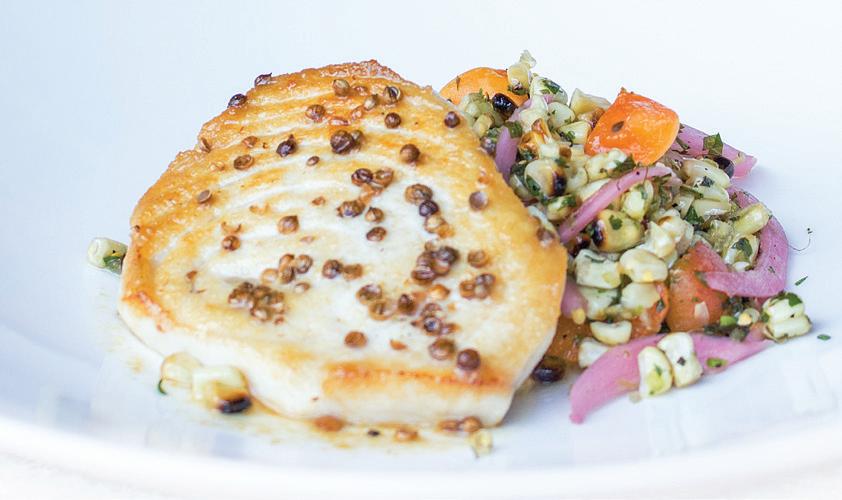

ARValentien.com | 858.777.6635 Breathtaking Views, Uniquely California Cuisine For Every Occasion LPT_LJMS_ARV_2018.indd 1 9/18/2018 2:20:21 PM
WE ARE CALIFORNIA’S BUSINESS BANC.
Proud Partner and the Official Bank of LA JOLLA MUSIC SOCIETY
Every day, business owners, entrepreneurs, executives and community leaders are being empowered by Banc of California to reach their dreams and strengthen our economy. With more than $10 billion in assets and over 30 banking locations throughout the state, we are large enough to meet your banking needs, yet small enough to serve you well.
Learn more about how we’re empowering California through its diverse businesses, entrepreneurs and communities at bancofcal.com
Banc of California, N.A. All rights reserved.
© 2019
TOGETHER WE WINTM

bright.com • 858.496.9700 Proud Supporter of the La Jolla Music Society Los Angeles • West Los Angeles • Santa Barbara • Orange County • San Diego Palm Springs • San Francisco • Sonoma • Saint Helena • Healdsburg • Phoenix Chairs to China Linens to Lighting Tables to Tents QUALITY SERVICE EXPERIENCE INNOVATION

2620 Truxtun Rd, San Diego CA, 92106 (619) 566 0069 Liberty Station 7611 Fay Ave, La Jolla CA, 92037 (858) 777 0069 La Jolla

Foundation
Board of Trustees
Edward A. Dennis, PhD Chairman
Mary F. Berglund, PhD Treasurer
Peter C. Farrell, PhD, DSc Secretary
Charles G. Cochrane, MD
Michael P. Coppola, MD
Anthony DeMaria, MD
Sir Neil Douglas, MD, DSc, FRCPE
Klaus Schindhelm, BE PhD
Jonathan Schwartz, MD Kristi Burlingame Executive
The ResMed Foundation is pleased to support your excellent programs in musical arts education.
Director
7514 Girard Avenue, Suite 1-343 La Jolla, CA, USA, 92037 Tel 858-361-0755 ResMedFoundation.org
APOLLON MUSAGÈTE QUARTET WITH GARRICK OHLSSON
JESS GILLAM & THOMAS WEAVER
AN EVENING WITH THE WAR & TREATY
NAT GEO LIVE: EXPLORING MARS WITH KOBIE BOYKINS
DANIIL TRIFONOV
ISABEL LEONARD & PABLO SÁINZ-VILLEGAS
RANDALL GOOSBY & ZHU WANG
STORM
HOLIDAY ORDEAL
BOARD OF DIRECTORS · 2022-23
H. Peter Wagener – Chair
Vivian Lim – Vice Chair
Steve Baum
Mary Ann Beyster
Eleanor Y. Charlton
Ric Charlton
Mary Ellen Clark
Sharon Cohen Ellise Coit
Bert Cornelison
Ann Parode Dynes
Jennifer Eve
Debby Fishburn
Stephen Gamp
John Hesselink
Susan Hoehn
HONORARY DIRECTORS
Brenda Baker
Stephen Baum
Joy Frieman, Ph.D.
Irwin M. Jacobs
Joan K. Jacobs
Lois Kohn (1924-2010)
Sue Major
Arman Oruc
Peggy Preuss
Tom Rasmussen
Sylvia Ré Sheryl Scarano Marge Schmale
Jeanette Stevens Stephanie Stone Debra Turner Lise Wilson Bebe L. Zigman
LA JOLLA MUSIC SOCIETY STAFF
Todd R. Schultz – President & CEO
Leah Rosenthal – Artistic Director
Inon Barnatan – SummerFest Music Director
ADMINISTRATION
Karin Burns – Director of Finance Brady Stender – Finance & Administration Manager
PROGRAMMING
Grace Smith – Artistic Programming Manager Carly Cummings – Artistic Programming Coordinator John Tessmer – Artist Liaison Allison Boles – Education & Community Programming Director Jian Wang – Education & Community Programming Coordinator Eric Bromberger – Program Annotator
OPERATIONS & PRODUCTION
Tom Jones – Director of Production & Technology
Verdon Davis – Technical Director
Tom Mehan – Facilities Manager
Spencer Kahn – Technical Coordinator
Yoni Hirshfield – Technical Coordinator
Kim Chevallier – Security Supervisor
Jonnel Domilos – Piano Technician
Serafin Paredes – Community Music Center Director Xiomara Pastenes – Community Music Center Administrative Assistant Community Music Center Instructors:
Pierre Blocker, Noila Carrazana, Marcus Cortez, Armando Hernandez, Michelle Maynard, Eduardo Ruiz, Rebeca Tamez
DEVELOPMENT
Ferdinand Gasang – Director of Development Natéa Cooke – Development Coordinator, Stewardship & Annual Fund Camille McPherson – Development Coordinator, Institutional Giving & Grants
VENUE SALES & EVENTS
Nicole Slavik – Venue Sales & Events Director
Juliet Zimmer – Venue Sales Manager
Helene K. Kruger (1916-2019)
Conrad Prebys (1933-2016)
Ellen Revelle (1910-2009)
Leigh P. Ryan, Esq. Dolly Woo
LA JOLLA MUSIC SOCIETY
7600 Fay Avenue, La Jolla, California 92037
858.459.3724
858.459.3727
MARKETING & TICKET SERVICES
Dawn Petrick – Director of Marketing and Communications Stephanie Thompson – Communications & Public Relations Manager
Cristal Salow – Data & Marketing Analysis Manager
Angelina Franco – Sr. Graphic Designer Mariel Pillado – Graphic Designer
Shannon Bobritchi – Box Office & Guest Services Manager
Patrick Mayuyu – Box Office & Guest Services Assistant Manager Kaitlin Barron – Box Office & Guest Services Lead Associate Sam Gilbert – Box Office & Guest Services Associate Mitch Cook – Box Office & Guest Services Associate Shaun Davis – House Manager
TheConrad.org · 858.459.3728 11
Admin:
| Fax:
TABLE OF CONTENTS
*Executive Committee
CALENDAR 2
14
17
22
23
24
28
32
LARGE
36 PONCHO SANCHEZ 37 ARTIST BIOGRAPHIES 43 SUPPORT 47
THE CONRAD
Home of La Jolla Music Society
Winter Season
From classical, jazz, and dance to global music, National Geographic speakers, and family concerts, each season Artistic Director Leah Rosenthal brings the best artists in the world to the San Diego community. This season, our most exciting to date, will feature more than 50 artists, including favorites like Yo-Yo Ma, Midori, Emerson Quartet, Daniil Trifonov, Zakir Hussain, Kodo, Alvin Ailey American Dance Theatre, and the Monterey Jazz Festival, plus many inspiring new faces like Cliburn Gold Medal winner Yunchan Lim, rising-star saxophonist Jess Gillam, The War and Treaty, Time For Three, Maria Schneider, and illusionist Scott Silven.
SummerFest
La Jolla Music Society’s acclaimed chamber music festival, SummerFest, curated by award-winning pianist and festival Music Director Inon Barnatan, engages more than 80 of the world’s finest musicians to perform at The Conrad throughout the month of August. In addition to remarkable mainstage performances, SummerFest offers over 70 free and open-to-the-public educational activities. To learn more, visit TheConrad.org/SummerFest
The Conrad
The Conrad Prebys Performing Arts Center opened in 2019 and serves as a gathering place for cultural, arts education, and community activity. As the permanent home of La Jolla Music Society, The Conrad hosts world-class performances presented by LJMS and other local arts organizations in its four outstanding performance and activity spaces, The Baker-Baum Concert Hall, The JAI, The Atkinson Room, and the picturesque Wu Tsai QRT.yrd.

Education and Community Engagement
La Jolla Music Society’s award-winning Education & Community Programming provides unmatched access and learning opportunities to more than 11,000 students and community members throughout San Diego County annually. With education and community engagement at the heart of our mission, we work closely with each visiting artist and ensemble to create outreach activities that highlight their unique talents and expertise at both The Conrad and in the community. With our state-of the-art video and streaming capabilities at The Conrad, we are able to provide live streaming for events such as our annual SummerFest and education events for free in our Digital Concert Hall.
12 THE CONRAD / LA JOLLA MUSIC SOCIETY · 2022-23 SEASON
Welcome to La Jolla Music Society’s 54 th Winter Season

Dear friends,
Welcome back to The Conrad for an inspiring 54 th season, filled with world-class artists and rising stars. I hope you’re as excited as we are to be launching a new year!
As I write this, we are wrapping up SummerFest, four weeks of exquisite performances by internationally renowned musicians gathered here in La Jolla. For more than 20 years, I’ve been an attendee at SummerFest, exhilarated by this concentrated schedule of great chamber works, and in the past three years Music Director Inon Barnatan has infused a new vision and spirit into the festival. If you haven’t attended SummerFest, mark your calendar now for August 2023. I’m confident you’ll be as hooked as I—and so many others!
Now we look forward to our 54 th season, one of our most ambitious yet, thoughtfully crafted by Artistic Director Leah Rosenthal, whose vision, passion and intelligence inspires us all. Thanks to her knowledge, experience, and connections we bring you such exciting talents as Daniil Trifonov, Joyce DiDonato, Yo-Yo Ma, Midori, the Emerson Quartet, Kodo, and Alvin Ailey American Dance Theatre, while also expanding our horizons with artists like saxophone sensation Jess Gillam, illusionist Scott Silven, piano phenom Yunchan Lim, global percussion master Zakir Hussain, Complexions Contemporary Ballet, and many more.
I hope you will take in as many different kinds of programs as possible at The Conrad this season. There is so much to see and hear and enjoy, and we want you to be a part of this organization and to feel at home whenever you’re at The Conrad.
Todd Schultz President & CEO
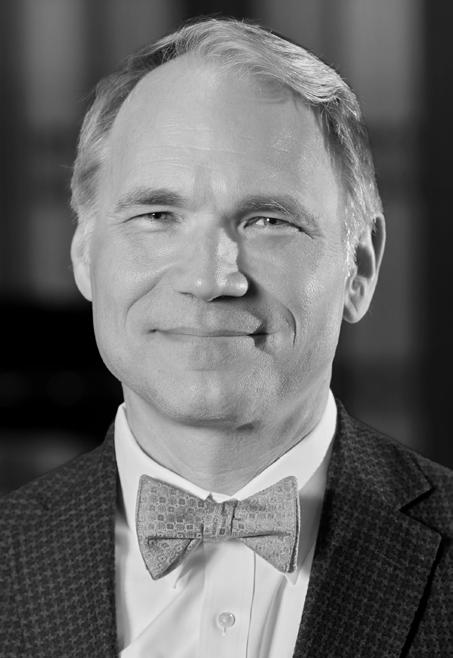 La Jolla Music Society
La Jolla Music Society
Our Mission: The mission of La Jolla Music Society is to enhance cultural life and engagement by presenting and producing a wide range of programming of the highest artistic quality, and to make The Conrad Prebys Performing Arts Center a vibrant and inclusive hub.
TheConrad.org · 858.459.3728 13
PRELUDE 6:30 PM
Lecture by Michael Gerdes
Support for this program generously provided by:
The City of San Diego Commission for Arts and Culture
APOLLON MUSAGÈTE QUARTET GARRICK OHLSSON, piano
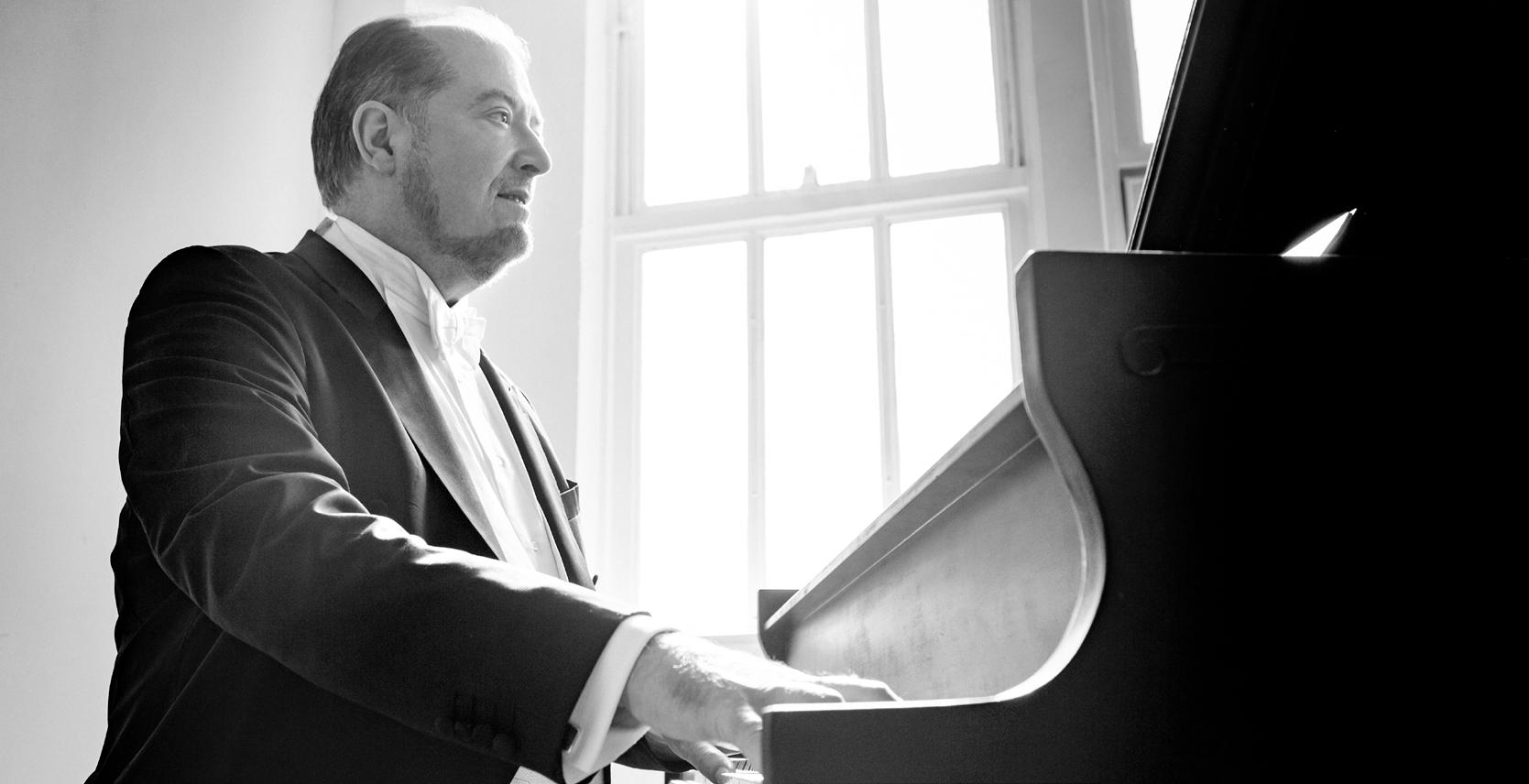
SATURDAY, OCTOBER 8, 2022 · 7:30 PM THE BAKER-BAUM CONCERT HALL
La Jolla Music Society’s 2022–23 season is supported by The Conrad Prebys Foundation, The City of San Diego Commission for Arts and Culture, Banc of California, The Lodge at Torrey Pines, ProtoStar Foundation, Vail Memorial Fund, ResMed Foundation, Bright Events Rentals, Ace Parking, Brenda Baker and Steve Baum, Raffaella and John Belanich, Gordon Brodfuehrer, Mary Ellen Clark, Teresa and Harry Hixson, Joan and Irwin Jacobs, Dorothea Laub, Jeanette Stevens, Debra Turner, and Bebe and Marvin Zigman.
J.S. BACH
The Art of the Fugue, BWV 1080 (1685–1750) No. 1 Contrapunctus 1 No. 4 Contrapunctus 4 No. 9 Contrapunctus 9 a 4 alla Duodecima
DVO
RÁK
String Quartet in E-flat Major, Opus 51 (1841–1904) Allegro ma non troppo Dumka (Elegie): Andante con moto; Vivace Romanze: Andante con moto Finale: Allegro assai Apollon Musagète Quartet Paweł Zalejski, Bartosz Zachłod, violins; Piotr Szumieł, viola; Piotr Skweres, cello

INTERMISSION
Piano Quintet in G Minor, Opus 57 (1906–1975)
SHOSTAKOVICH
Prelude: Lento
Fugue: Adagio Scherzo: Allegretto Intermezzo: Lento; Appassionato Finale: Allegretto Garrick Ohlsson, piano; Apollon Musagète Quartet
This performance marks Apollon Musagète’s La Jolla Music Society debut. Garrick Ohlsson last performed for La Jolla Music Society during SummerFest on July 30, 2022.
14 THE CONRAD / LA JOLLA MUSIC SOCIETY · 2022-23 SEASON
ˇ
ARTS MANAGEMENT GROUP, INC.
by Eric Bromberger
The Art of the Fugue, BWV 1080
JOHANN SEBASTIAN BACH
Born March 31, 1685, Eisenach, Germany Died July 28, 1750, Leipzig Composed: 1740–50
Approximate Duration: 12 minutes
On a visit to Berlin in 1747, Bach played before Frederick the Great, who in turn gave Bach a theme and asked him to extemporize a six-part fugue on it. Bach improvised a three-part fugue for Frederick on the spot and then—back in Leipzig—took that “royal” theme through thirteen further contrapuntal extensions, which he presented to the King as A Musical Offering. But Bach’s interest in exploring the contrapuntal possibilities of a single theme extended well beyond the famous visit to Berlin in 1747. Evidence suggests that in about 1740 Bach had begun a lengthy work consisting of a series of fugues and canons based on one theme. His work on this project continued across the decade, even during the years of his increasing blindness, and in fact the project would remain unfinished—at the time of his death, Bach was working on a triple fugue that was left incomplete. Bach had prepared the first eleven fugues for publication, and after his death all the pieces based on this one theme were gathered by his son Carl Philipp Emanuel and published in the fall of 1751 under the name The Art of the Fugue, a title the composer probably never heard or imagined.
The fact that the work was left unfinished has created a number of problems. Principal among these is Bach’s failure to indicate the instrumentation he had in mind for this music, and some have wondered whether he intended the work to be performed at all. Its complexities—and the lack of indicated instrumentation—have led some to believe that these works were unplayable, intended only as cerebral exercises on the lofty plain at which Bach had finally arrived. The Art of the Fugue has been performed by harpsichord, piano, organ, string quartet, chamber orchestra, and full symphony orchestra and has also been recorded by such unexpected ensembles as brass quintet and saxophone quartet.
In The Art of the Fugue Bach preferred the title Contrapunctus—“counterpoint”—to Fugue, and he arranged the fugues in a sequence of increasing complexity. Bach’s fundamental theme seems simplicity itself: in D minor, it is only four measures long, and—even at its steady tempo—it gives the impression of increasing speed, as the half-notes of the opening measures give way to quarters in the third and to eighths in the final measure. Contrapunctus I introduces Bach’s fundamental fugue subject in its simplest form, worked out here without countertheme. Contrapunctus IV has the subject in inversion, here developed with unusual harmonic freedom. The brief Contrapunctus IX is a spirited double fugue on a new
theme; as it progresses it incorporates as its second subject the original fugue theme, combined at the interval of a twelfth, hence alla Duodecima.
String Quartet in E-flat Major, Opus 51 ANTONÍN DVOŘÁK
Born September 8, 1841, Muhlhausen, Bohemia
Died May 1, 1904, Prague
Composed: 1878–79
Approximate Duration: 32 minutes
Dvořák’s sudden burst to fame in his late thirties was the result of help from powerful friends. Brahms recognized the Czech composer’s talents and did much to get him launched, including getting his own publisher—Simrock of Berlin—to publish Dvořák’s music. There were others—critic Eduard Hanslick and violinist Joseph Joachim among them—who promoted and performed Dvořák’s music, and the young composer found himself in debt to a number of prominent German musicians. Dvořák was not entirely comfortable in the new world that he seemed to be conquering, for his new German friends wanted him to move from Prague to Vienna, give up his Czech identity, and use his talents to write music in the mainstream German tradition. Dvořák was grateful for their help, but he refused to surrender his past or his identity, and when Simrock suggested that Dvořák change his first name from the Czech “Antonín” to the German “Anton” because it would make him more attractive to German audiences, Dvořák exploded and held fast to his Czech heritage.
The Quartet in E-flat Major makes clear how Dvořák found himself trapped between these two worlds at this moment in his life. It was commissioned by the German violinist Jean Becker, and it was first performed privately at the Berlin home of Joachim; the first public performance was in Magdeburg, and the Hellmesberger Quartet performed it in Vienna before it was heard in Prague. All this suggests how completely Dvořák had conquered the German musical establishment, but the music itself remains unmistakably, adamantly Czech. Even as he writes for German performers and audiences, Dvořák insists on using Czech rhythms, sounds, and forms—it is as if he is declaring his place in both musical worlds at once.
Dvořák began this quartet on Christmas Day 1878 and completed it three months later, on March 28, 1879. This is exceptionally lovely music, one of those hidden treasures that leave one wondering how it could ever have been neglected. From the first instant one knows that this will be relaxed music, content to make its way on the beauty of its material and the quality of its craftsmanship rather than through conflict or exploring the dark places of the soul. After a couple of tentative gestures, the opening theme of the Allegro ma non tanto unfolds upward. Dvořák’s biographer John Clapham hears an echo of the beginning of the Mendelssohn Octet here, but more striking is the little rocking three-note tag at the end of the phrases in this theme. This figure outlines the shape of
TheConrad.org · 858.459.3728 15 APOLLON MUSAGÈTE QUARTET & GARRICK OHLSSON - PROGRAM NOTES Program notes
the polka rhythm, and Dvořák builds the dancing second subject on that rhythm. A further theme feels more animated, but happy spirits will prevail in this movement, and in the development Dvořák deftly presents the opening theme with accompaniment from the polka rhythm.
The second movement is in one of the most Czech of forms, the dumka, though Clapham points out that Dvořák had little clear sense of the formal meaning of that term. For him, a dumka was simply melancholy, lamenting music from which brighter moods would suddenly flash out. This one demonstrates that perfectly: it opens with a grieving melody in the first violin (Dvořák marks it dolce) and even introduces a singing second subject of similar character. But suddenly the music leaps ahead and dances furiously. The sudden change to G major makes it seem all the more sunny, and the impressive thing is that Dvořák has derived this theme from the opening dumka—they share the same shape and many of the same notes. The dark opening returns, but Dvořák ends with a return of the fast material, and this wonderful movement—full of such different kinds of music—trails off into nothing.
The Romanze can seem a little more conventional—it is the one movement in the quartet without a specifically Czech element—but it is still notable for its harmonic freedom and melodic shading: this music hovers delicately between keys. The energetic finale zips along on an opening violin theme that seems made to order for a rondo-finale, but the theme quickly begins to develop and change. This theme appears to be derived from an old Czech leaping dance for men, and Dvořák really lets it fly. This is the most extroverted and virtuosic of the four movements, and in its closing moments Dvořák pushes the tempo ahead faster and faster to the ringing final chords.
Piano Quintet in G Minor, Opus 57
DMITRI SHOSTAKOVICH
Born September 25, 1906, St. Petersburg Died August 9, 1975, Moscow
Composed: 1940
Approximate Duration: 34 minutes
Shostakovich’s Piano Quintet, one of his most appealing and straightforward works, has come in for a hard time from certain critics, and perhaps for strange reasons. Written in 1940, several years after the Pravda attack on Shostakovich’s opera Lady Macbeth of the Mtensk District—an attack that nearly destroyed his career—the Piano Quintet received the Stalin Prize. That fact alone has been enough to destroy it for some Western critics, who feel that any music associated— however remotely—with Stalin’s name and the approval of the Soviet government must be without merit, representing a capitulation to inferior artistic ideals.
A very different sort of criticism came from another
source. Serge Prokofiev said of Shostakovich’s Piano Quintet: “What astonishes me about the Quintet is that so young a composer, at the height of his powers, should be so very much on his guard, and so carefully calculate every note. He never takes a single risk. One looks in vain for an impetus, a venture.” One might note here that a composer who regarded the young Shostakovich as a rival may not be the most impartial of critics, and also that a composer whose career had nearly been iced by the Soviet government might well be “very much on his guard.”
Whatever the critical reactions to it, the Piano Quintet has proven quite popular with one important faction of musical life: audiences. While it is true that the Piano Quintet is conservative in its musical language, it is also unfailingly melodic, fresh, and good-natured, and—despite the reaction of some of its critics—it remains one of Shostakovich’s most frequently performed and recorded works.
Some have claimed to hear the influence of Bach in the first two movements: a Prelude and a Fugue. The piano alone plays the broad-ranging Prelude theme and is soon joined by the strings. The Poco più mosso second theme is also first heard in the piano, which has a very prominent role throughout the Quintet (Shostakovich himself played the piano at the first performance, on November 23, 1940, in Moscow). The beginning of the Fugue, however, belongs to the strings, which introduce the muted and somber main subject. The music rises to a great climax, then falls back to end very quietly. By contrast, the Scherzo explodes with life. In a hard-driving 3/4, this music powers furiously ahead, its rhythm pounding into one’s consciousness. The movement is also full of brilliant color: glissandos, pizzicatos, left-hand pizzicatos, instruments playing in their highest registers. Particularly effective is the ending, which rushes ahead without the slightest relaxation of tempo to the sudden, surprising cadence.
The final two movements are connected. The Intermezzo opens with a pizzicato line over which the first violin sings a long cantilena of unusual beauty. Gradually the other instruments enter, the music rises to a dramatic climax, then subsides, and out of that calm emerges the Finale. The last movement is the gentlest of the five. Far from storming the heavens, this music remains sunlit and rhapsodic. It is based on two themes—the piano’s gentle opening melody and an angular second theme first heard in the piano over the strings’ powerful triplets. Shostakovich develops both these ideas before bringing the Quintet to a conclusion that is pleasing precisely for its understatement: the music grows quiet and suddenly vanishes on three quiet strokes of sound derived from the Finale’s opening theme.
16 THE CONRAD / LA JOLLA MUSIC SOCIETY · 2022-23 SEASON
APOLLON MUSAGÈTE QUARTET & GARRICK OHLSSON - PROGRAM NOTES
PRELUDE 2 PM
Musical Prelude by young local artists
JESS GILLAM, saxophone THOMAS WEAVER, piano
SUNDAY, OCTOBER 23, 2022 · 3 PM
THE BAKER-BAUM CONCERT HALL
Support for this program generously provided by:
Gordon Brodfuehrer Jeanette Stevens
La Jolla Music Society’s 2022–23 season is supported by The Conrad Prebys Foundation, The City of San Diego Commission for Arts and Culture, Banc of California, The Lodge at Torrey Pines, ProtoStar Foundation, Vail Memorial Fund, ResMed Foundation, Bright Events Rentals, Ace Parking, Brenda Baker and Steve Baum, Raffaella and John Belanich, Gordon Brodfuehrer, Mary Ellen Clark, Teresa and Harry Hixson, Joan and Irwin Jacobs, Dorothea Laub, Jeanette Stevens, Debra Turner, and Bebe and Marvin Zigman.
MEREDITH MONK
Early Morning Melody (b. 1942)
PHILIP GLASS
Melody for Saxophone No. 10 (b. 1937)
Jess Gillam, saxophone
Dappled Light (b. 1978)
LUKE HOWARD
POULENC
Sonata for Oboe and Piano (1899–1963)
Elégie Scherzo
Déploration
The Unseen Way (1944–2022)
THOMPSON
TELEMANN
Sonata in F Minor: TWV 41f1 (1681–1767) Andante cantabile Allegro Andante Vivace INTERMISSION
AYANNA WITTER-JOHNSON
Luminay (b. 1980s)
Jess Gillam, saxophone
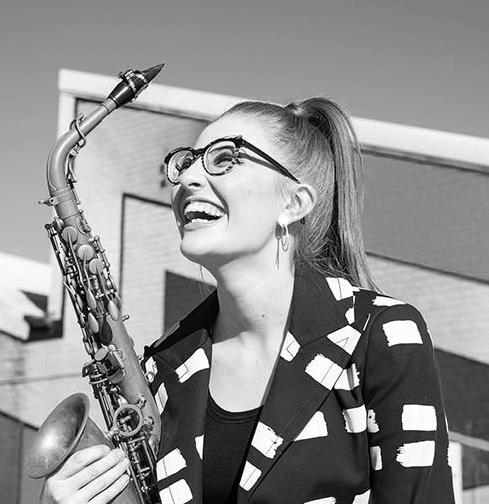
RANT! (b. 1956)
JOHN HARLE
Flow, My Tears (1563–1626)
DOWLAND
Je ne t’aime pas (1900–1950)
WEILL
PIAZZOLLA
Selections from Histoire du Tango (1921–1992)
Bordel
Café Nightclub
Jess Gillam, saxophone; Thomas Weaver, piano
This performance marks Jess Gillam’s and Thomas Weaver’s La Jolla Music Society debuts.
TheConrad.org · 858.459.3728 17
by Eric Bromberger
A SAXOPHONE RECITAL
Adolphe Sax (1814–1894) was born in Belgium but moved to Paris while in his twenties and made that city his home for the rest of his life. Sax was by all accounts a very difficult man, but he was a brilliant musician and a brilliant inventor, and he invented a number of instruments. Most of these have drifted into history, but one of them, the saxophone (which he invented in 1846), has had a long and distinguished life. Part of its success, of course, is that it became one of the principal instruments of African American jazz musicians, and it was the favored instrument of such performers as Charlie Parker, John Coltrane, Sonny Rollins, Ornette Colman, and Stan Getz. This has led to a certain condescension toward the saxophone in snobby classical circles, but a number of classical composers have found its reedy, plaintive sound ideal for their purposes. Probably the first of these was Georges Bizet, who used the saxophone in his incidental music to L’Arlésienne in 1872. More recent examples include Ravel in his orchestration of Mussorgsky’s Pictures at an Exhibition, Prokofiev’s Romeo and Juliet and Lieutenant Kije Suite, Vaughan Williams’ Sixth and Ninth Symphonies, and John Adams’ City Noir
This evening’s recital offers a variety of music. Some of it was originally written for saxophone, some of it is heard in arrangements of music first written for other instruments. The selections range from Elizabethan times to the contemporary, and all are well suited to show off the character and the many dimensions of Adolphe Sax’s most successful invention.
Early Morning Melody
MEREDITH MONK
Born November 20, 1942, New York City
Composed: 1990
Approximate Duration: 1 minute
Meredith Monk is an interdisciplinary artist of Promethean accomplishments: she has worked in music, theater, dance, film, and opera. Known for her use of extended vocal techniques, Monk is also a composer, having written for orchestra and chamber ensembles, as well as composing the chamber opera Atlas, for which she also wrote the libretto and choreographed the dances. President Obama awarded her the National Arts Medal at the White House in 2015.
Monk’s Early Morning Melody was originally composed for singer on a wordless text, and it opens this concert in a transcription for saxophone. Debussy or Ravel would have called this piece an aubade, a “dawn serenade.” This music, barely a minute long, is pure, almost chaste—and it is perfect music to welcome the dawn.
Melody for Saxophone No. 10 PHILIP GLASS
Born January 31, 1937, Baltimore
Composed: 1995
Approximate Duration: 2 minutes
In 1995 Joanne Akalaitis and the New York Theatre Workshop offered an adaptation—a “performance piece”—of Jean Genet’s final novel, Prisoner of Love, which depicts Genet’s experiences in the Palestinian refugee camps in Lebanon in the 1980s. Akalaitis was Philip Glass’ first wife, and even though the couple had divorced fifteen years earlier, they had remained on good terms, and she asked Glass to provide incidental music for that production. Later that same year he gathered thirteen excerpts from his incidental music and published them as his Melodies for Saxophone.
Glass has spoken of his fondness for the saxophone, for both its sound and its expressive possibilities, and his choice of a solo saxophone to accompany the horrifying events of Genet’s book reflects his respect for the instrument. Among the thirteen movements are several scored for each member of the saxophone family: soprano, alto, tenor, and baritone sax. One of the most popular of the collection is No. 10, scored for alto sax. This is not descriptive music—it does not depict events happening on stage—but rather atmospheric music, and the mournful, plaintive sound of the instrument is wellsuited to accompany the events of Genet’s grim novel.
Dappled Light
LUKE HOWARD
Born June 3, 1978, Melbourne
Composed: 2020
Approximate Duration: 4 minutes
Australian composer Luke Howard grew up in Melbourne, where he learned to play the piano, both classical and jazz. He later studied at the Victorian College of the Arts and has made a career as both composer and performer (he is the pianist in a jazz trio). Howard has been particularly drawn to social and environmental causes, and he has been involved in a number of collaborative projects, including dance, theater, and film. His recent album All of Us, inspired by Camus’ The Plague, was composed during Australia’s stringent COVID lockdown and reflects that mood of isolation, withdrawal, and stasis.
Howard has been influenced by Philip Glass and other minimalist composers, and his Dappled Light reflects some of that influence. Against a steady background of quietly murmuring textures, the saxophone sings a series of what seem fragmentary themes. There is no real development here, only an ongoing restatement of those melodic fragments, yet those fragments weave a soothing spell over the four-minute span of Dappled Light
18 THE CONRAD / LA JOLLA MUSIC SOCIETY · 2022-23 SEASON JESS GILLAM & THOMAS WEAVER - PROGRAM NOTES Program notes
Sonata for Oboe and Piano
FRANCIS POULENC
Born January 7, 1899, Paris
Died January 30, 1963, Paris Composed: 1962
Approximate Duration: 14 minutes
During the 1920s, young Poulenc became friends with Serge Prokofiev, then living in Paris. Poulenc described the beginning of their friendship:
First, we each of us had a liking for the piano—I played a lot with him, I helped him practice his concertos—and then something else that has nothing to do with music: a liking for bridge . . . Usually we spent our evenings playing. Music was an extra. If I arrived early, we’d have a cold dinner and play music with four hands . . . There . . . That’s the point where my friendship with Serge crystallised.
Over the next ten years, the two composers remained cordial friends, but after Prokofiev returned to Russia in 1936 they never saw each other again. Poulenc tried to get messages to Prokofiev, but he never learned whether they made it through the Iron Curtain.
Many years later, in the summer of 1962, Poulenc composed his Sonata for Oboe and Piano and dedicated it to the memory of Prokofiev, who had died nine years earlier. The sonata, which is heard at this concert in an arrangement for saxophone and piano, has a somewhat unusual form: Poulenc reverses the expected fast-slow-fast sequence, opting instead for a slow-fast-slow pattern, and the markings for the outer movements—Elégie and Déploration (“Lamentation”)—make clear this music’s character. The opening Elégie (marked “Peacefully”) is quite effective: over steady piano accompaniment, the oboe sings its quiet and wistful song; a more animated middle section leads to a return of the opening material and a quiet close. The middle movement, a scherzo marked “Very animated,” gallops on its 6/8 meter (Poulenc throws in an occasional 9/8 measure along the way); the lyrical middle sings gently before the movement rips to its close. Poulenc marks the oboe’s part at the very end “rude”(harsh) and the piano’s final note “dry.” The Déploration returns to the somber mood of the first movement, with the oboe once again rising above subdued piano accompaniment (at one point Poulenc marks the piano’s part “monotone”), and at the close the music fades into silence.
When Poulenc wrote this elegiac sonata at his summer retreats in Brives and Bagnols en Forêt (near Cannes), he could not have known that it would be his final completed work—he died suddenly of a heart attack in Paris the following winter.
The Unseen Way
BARBARA THOMPSON
Born July 27, 1944, Oxford, England
Died July 9, 2022
Composed: 2003
Approximate Duration: 6 minutes
Barbara Thompson, who died just three months ago, was one of the outstanding jazz musicians in England during the second half of the twentieth century. She studied composition at the Royal College of Music and learned to play both flute and clarinet, but her exposure to John Coltrane and Johnny Hodges led her to make her career as a saxophonist. She played in a variety of bands, including United Jazz & Rock Ensemble, Colosseum, and the all-female She Trinity; she was a close colleague of Andrew Lloyd Weber and worked with him on Cats and Starlight Express. Thompson, who was married to drummer Joe Hiseman, was also a “classical” composer who wrote a piano concerto and a concerto for three saxophones and orchestra. She was diagnosed with Parkinson’s in 1997 and refused to perform publicly if she was not at her best, but gradually she was able to take up the saxophone again and perform to her own satisfaction. Thompson was awarded an MBE in 1996.
Her Unseen Way takes its inspiration and title from the poetry of Rabinadrath Tagore.
Sonata in F Minor, TWV 41f1
GEORG PHILIPP TELEMANN
March 24, 1681, Magdeburg, Germany
June 25, 1767, Hamburg
Composed: 1728
Approximate Duration: 11 minutes
Telemann wrote hundreds of sonatas, and most of them remain unfamiliar to modern audiences, but the present Sonata in F Minor is frequently performed and has become fairly well known. It was first published in Hamburg in 1728 as part of a large collection of Telemann’s works entitled Der getreue Musik-Meister: “The Constant [or True] Music-Master.” The sonata appears to have been originally composed for bassoon and continuo, but Telemann specified that it could also be performed on the flute, and music this attractive has drawn a number of different performers: it exists in versions for trombone and for euphonium, and its present arrangement for saxophone and piano makes perfect sense.
The Sonata in F Minor is in the slow-fast-slow-fast sequence of movements of the baroque instrumental sonata. Telemann opens with a stately Andante cantabile; in his manuscript this movement is marked Triste (“sad”), and the movement is sometimes given that title. Next is a lively Allegro, followed by a brief Andante. The finale is an athletic Vivace in 3/8 that demands some very spirited playing by the principal instrument.
TheConrad.org · 858.459.3728 19 JESS GILLAM & THOMAS WEAVER - PROGRAM NOTES
Lumina
AYANNA WITTER-JOHNSON
Born 1980s, London
Composed: 2021
Approximate Duration: 4 minutes
The daughter of Jamaican actor Wil Johnson, Ayanna Witter Johnson studied at Trinity Laban Conservatoire of Music in London and then earned her master’s degree from the Manhattan School of Music. Johnson is an artist of many talents: she is a composer, a singer, a producer, a pianist, and a cellist (she plays the cello standing up and often sings as she plays). Her own music combines the many strands of her training and heritage, which include classical, jazz, reggae, and rhythm and blues. Johnson has received commissions from the London Symphony Orchestra and the Royal Philharmonic, and she has written string quartets for the Kronos and Ligeti Quartets.
RANT!
JOHN HARLE
Born September 20, 1956, Newcastle-on-Tyne, England
Composed: 2018
Approximate Duration: 6 minutes
John Harle has had a distinguished career in many different fields. Trained at the Royal College of Music, he is not only one of the finest saxophonists of his generation, but also a composer, a producer, and an educator. Harle was for many years the lead saxophonist in the Michael Nyman Band, and he has been music adviser to Paul McCartney as well as a longtime collaborator with Elvis Costello. Harle has composed for film and television in England, and he has worked with and performed the music of such composers as Harrison Birtwistle, Richard Rodney Bennett, MarkAnthony Turnage, and others. Since 1982 he has taught at the Guildhall School of Music and Dance.
A rant is a spirited country dance of England, often based on the jig; its purpose has been said to be “to make merry.” Harle wrote RANT! specifically for Jess Gillam. It begins quietly with a folk tune from Cumbria, then speeds ahead and does indeed “make merry.”
Flow, My Tears
JOHN DOWLAND
Born January 2, 1563, London
Buried February 20, 1626, London
Composed: 1600
Approximate Duration: 2 minutes
A contemporary of Shakespeare, the lutenist and singer John Dowland was educated at Oxford and played before Elizabeth I, but—disappointed in his hopes of becoming court lutenist—he made his career largely on the continent. He held positions in Paris, Venice, Florence, Nuremberg, and Denmark before he returned to England and finally became lutenist to the court of James I. Dowland played and sang at James’ funeral in May 1625 and died early the following year at the age of 63.
Though he also wrote a number of dances, we remember Dowland today for his lute songs: songs for voice with the accompaniment of lute—Dowland would accompany himself as he sang. Almost all his lute songs are about love, and while he could celebrate the pleasures of love in these songs, Dowland appears to have been irresistibly drawn to the darker side of love—throughout his songs run the recurrent themes of separation, longing, unworthiness, pain. Flow, My Tears is from Dowland’s Second Book of Ayres, published in London in1600. Its opening depicts the falling of tears, and some sense of the song may be had from its first stanza:
Flow my tears, fall from your springs, Exil’d for ever let me mourn
Where night’s black bird her sad infamy sings, There let me live forlorn.
Je ne t’aime pas
KURT WEILL
Born March 2, 1900, Dessau, Germany Died April 3, 1950, New York City Composed: 1934 Approximate Duration: 4 minutes
Weill composed Je ne t’aime pas in the mid-1930s while living in France, where he had fled after the Nazis had taken control of Germany. Like many of his songs of this era, it is an independent song (that is, not part of a larger work), and throughout his songs of this era runs an undercurrent of disillusionment—the tone is wistful (sometimes bitter) as the songs speak of lost hopes and lost love. In Je ne t’aime pas—a cabaret song about lost love—Weill’s elegant, haunting melodies (almost) mask the bitterness of the text.
20 THE CONRAD / LA JOLLA MUSIC SOCIETY · 2022-23 SEASON
JESS GILLAM & THOMAS WEAVER - PROGRAM NOTES
Selections from Histoire du Tango
ASTOR PIAZZOLLA
Born March 11, 1921, Mar de Plata, Argentina
Died July 4, 1992, Buenos Aires
Composed: 1985
Approximate Duration: 16 minutes
In the mid-1980s Astor Piazzolla published what has become one of his most popular works, L’histoire du tango, a survey of how that form had evolved in four different decades across the twentieth century. Piazzolla originally scored his “History of the Tango” for flute and guitar as a way of evoking the tango’s origins, but this music has been heard in countless arrangements; this recital offers the first three movements in a version for saxophone. The opening movement, Bordel 1900, reminds us of some of the seamier origins of the form, but the music itself is extroverted and fun—Piazzolla’s performance instruction is Molto giocoso: “very happy.” Café 1930 shows us the tango as it had become domesticated after several decades—here it functions as comfortable background music while people eat. Night Club 1960 brings us the tango in transition toward something livelier, as contemporary Latin dance forms began to reinvigorate it.
TheConrad.org · 858.459.3728 21
JESS GILLAM & THOMAS WEAVER - PROGRAM NOTES
La Jolla Music Society’s 2022–23 season is supported by The Conrad Prebys Foundation, The City of San Diego Commission for Arts and Culture, Banc of California, The Lodge at Torrey Pines, ProtoStar Foundation, Vail Memorial Fund, ResMed Foundation, Bright Events Rentals, Ace Parking, Brenda Baker and Steve Baum, Raffaella and John Belanich, Gordon Brodfuehrer, Mary Ellen Clark, Teresa and Harry Hixson, Joan and Irwin Jacobs, Dorothea Laub, Jeanette Stevens, Debra Turner, and Bebe and Marvin Zigman.
AN EVENING WITH THE WAR & TREATY
to be announced from stage
INTERMISSION
Michael Trotter, Jr. & Tanya Blount-Trotter

ABOUT
Since forming in 2014, The War and Treaty have amassed a following as eclectic as their sound itself, a bluesy but joyful fusion of Southern soul, gospel, country, and rock-and-roll. Known for live shows that are revival-like in their intensity, the husband-and-wife team of Michael Trotter, Jr., and Tanya Blount-Trotter create an exhilarating exchange of energy with their audience, a dynamic they’ve brought to the stage in opening for the legendary Al Green and touring with the likes of Brandi Carlile and Jason Isbell.
This performance marks
War & Treaty’s La Jolla Music Society debut.
22 THE CONRAD / LA JOLLA MUSIC SOCIETY · 2022-23 SEASON
FRIDAY, OCTOBER 28, 2022 · 7:30 PM THE BAKER-BAUM CONCERT HALL PROGRAM Program
NO
The
La Jolla Music Society’s 2022–23 season is supported by The Conrad Prebys Foundation, The City of San Diego Commission for Arts and Culture, Banc of California, The Lodge at Torrey Pines, ProtoStar Foundation, Vail Memorial Fund, ResMed Foundation, Bright Events Rentals, Ace Parking, Brenda Baker and Steve Baum, Raffaella and John Belanich, Gordon Brodfuehrer, Mary Ellen Clark, Teresa and Harry Hixson, Joan and Irwin Jacobs, Dorothea Laub, Jeanette Stevens, Debra Turner, and Bebe and Marvin Zigman.
EXPLORING MARS WITH KOBIE BOYKINS

ABOUT

A dynamic engineer at NASA’s Jet Propulsion Laboratory, Kobie Boykins is on the front line of Mars exploration. Boykins designed the solar arrays that power the Mars exploration rovers, Spirit and Opportunity and actuators on Curiosity, the Mars Science Laboratory. Boykins’ other projects have included work on the Mars Pathfinder mission and the Ocean Surface Topography Mission, making measurements by satellite of the Earth’s oceans.
This presentation marks Kobie Boykins’ La Jolla Music Society debut.
TheConrad.org · 858.459.3728 23
Thursday, November 3, 2022 · 7 PM THE BAKER-BAUM CONCERT HALL PROGRAM Presentation Question & Answer Session NO INTERMISSION
PRELUDE 6:30 PM Lecture by Kristi Brown Montesano
DANIIL TRIFONOV
THURSDAY, NOVEMBER 10, 2022 · 7:30 PM
THE BAKER-BAUM CONCERT HALL
La Jolla Music Society’s 2022–23 season is supported by The Conrad Prebys Foundation, The City of San Diego Commission for Arts and Culture, Banc of California, The Lodge at Torrey Pines, ProtoStar Foundation, Vail Memorial Fund, ResMed Foundation, Bright Events Rentals, Ace Parking, Brenda Baker and Steve Baum, Raffaella and John Belanich, Gordon Brodfuehrer, Mary Ellen Clark, Teresa and Harry Hixson, Joan and Irwin Jacobs, Dorothea Laub, Jeanette Stevens, Debra Turner, and Bebe and Marvin Zigman.
Daniil Trifonov is exclusively represented by Opus 3 Artists
TCHAIKOVSKY
Morning Prayer: Andante
Children’s Album, Opus 39 (1840–1893)
Winter Morning: Allegro
Playing Hobby-Horses: Presto Mama: Moderato
March of the Wooden Soldiers: Moderato
The Sick Doll: Moderato
The Doll’s Funeral: Adagio
Waltz: Allegro assai
The New Doll: Allegro
Mazurka: Allegro non troppo, Tempo di mazurka

Russian Song: Allegro
The Accordion Player: Adagio
Kamarinskaya: Vivace Polka: Moderato. Tempo di Polka Italian Song: Moderato assai
Old French Song: Molto moderato
German Song: Molto moderato Neapolitan Song: Andante Nanny’s Story: Moderato
The Sorcerer: Presto
Sweet Dreams: Moderato Lark Song: Moderato
The Organ-Grinder Sings: Andante
In Church: Moderato
Fantasy in C Major, Opus 17 (1810–1856)
SCHUMANN
Durchaus phantastisch und leidenschaftlich vorzutragen
Mässig. Durchaus energisch Langsam getragen. Durchweg leise zu halten
INTERMISSION
MOZART Fantasy in C Minor, K.475 (1756–1791)
RAVEL Gaspard de la nuit (1875–1937) Ondine
Le gibet Scarbo
SCRIABIN Piano Sonata No. 5 in F-sharp Major, Opus 53 (1872–1915)
Daniil Trifonov, piano
Daniil Trifonov
last performed for La Jolla Music Society in the Piano Series on April 17, 2019.
24 THE CONRAD / LA JOLLA MUSIC SOCIETY · 2022-23 SEASON
Program notes by Eric Bromberger
Children’s Album, Opus 39
PETER ILYCH TCHAIKOVSKY
Born May 7, 1840, Votkinsk, Russia
Died November 6, 1893, St. Petersburg
Composed: 1878
Approximate Duration: 26 minutes
We tend to think of composers as intensely serious creators, bent on producing High Art for the ages, but many great composers—Bach, Schumann, Debussy, Ravel, and Bartók among them—have been happy to compose music expressly for children. This music may be for children’s education or simply for their pleasure, but much of it is so good that it lives on, to be heard in concert halls full of adults.
Tchaikovsky loved children, and he too felt pulled to compose for them. In May 1878 he wrote to his patroness Madame Nedezhna von Meck: “A while ago I thought that it would not be a bad idea to make a small contribution to the stock of children’s musical literature, which is very modest. I want to create a series of little individual pieces just for children, and with an attractive title, like Schumann’s” (he was thinking here of works like Schumann’s Kinderszenen and Album für die Jugend). Over the following month, Tchaikovsky composed a set of twenty-four very brief pieces (many last less than a minute) and titled it Children’s Album.
This all sounds very innocent (and it is), but we should remember that this was also the most difficult moment in Tchaikovsky’s life. The year before, he had been maneuvered into marrying one of his students, a deranged young woman named Antonina Milyukova, and the marriage had been an instant disaster. Tchaikovsky abandoned his bride within days, suffered a nervous breakdown, and fled to Switzerland, where he would slowly recover over the next year. He returned to Russia in April 1878, but, unwilling to face his friends and colleagues in Moscow, he went instead to the family estate in Kamenka in the Ukraine. It was there that Tchaikovsky composed Children’s Album, and perhaps this evocation of childhood memories offered the composer some relief from the problems he was facing in the world of adults.
Tchaikovsky gave Children’s Album a subtitle that makes its identity and heritage clear: “24 pièces faciles, à la Schumann.” Many of these “easy pieces” have titles that evoke the world of childhood, and some are based on folk tunes. None needs detailed description, and audiences (of any age) can sit back and enjoy Tchaikovsky’s excursion into the world of childhood, in all its pleasures and all its innocence.
Fantasy in C Major, Opus 17 ROBERT SCHUMANN
Born June 8, 1810, Zwickau, Germany
Died July 29, 1856, Endenich, Germany
Composed: 1836
Approximate Duration: 28 minutes
In 1835, the 25-year-old Robert Schumann learned of plans to create a Beethoven monument in Bonn and—fired with enthusiasm for the project—resolved to compose a piano sonata and donate all receipts from it to support the monument. He wrote to his publisher, suggesting an elaborate publication in which the score would be bound in black and trimmed with gold, and he proposed a monumental inscription for that cover:
Ruins. Trophies. Palms.
Grand Piano Sonata
For Beethoven’s Monument
Yet when Schumann began composing this music the following year, his plans had changed considerably. He had fallen in love with the young piano virtuosa Clara Wieck, and her father exploded: Friedrich Wieck did everything in his power to keep the lovers apart, forbidding them to see each other and forcing them to return each other’s letters. The dejected Schumann composed a three-movement sonata-like piece that was clearly fired by his thwarted love: he later told Clara that the first movement was “the most passionate thing I have ever composed—a deep lament for you.” Yet the score, published under the neutral title Fantasy in 1839, contains enough references to Beethoven (quotations from the song cycle An die ferne Geliebte at the end of the first movement and from the Seventh Symphony in the last) to suggest that some of Schumann’s original plans for a Beethoven sonata remained in this music. And finally, to complicate matters even further, Schumann dedicated the score not to Clara but to Franz Liszt, who would become one of its great champions.
If the inspiration for this music is in doubt, its greatness is not: the Fantasy in C Major is one of Schumann’s finest compositions, wholly original in form, extremely difficult to perform, and haunting in its emotional effect. Schumann was right to call this music a Fantasy—it may seem like a piano sonata on first appearance, but it refuses to conform exactly to the rules of sonata form. The first movement, marked “Fantastic and passionate throughout,” begins with an impassioned falling figure that Schumann associated with Clara. In the quiet middle section, which Schumann marks “In the manner of a legend,” the music moves to C minor; yet the conclusion does not recapitulate the opening material in the correct key—the music returns to C major only after the reference to Beethoven’s song from An die ferne Geliebte
The second movement is a vigorous march full of dotted rhythms; Schumann marks it “Energetic throughout.” Curiously, Clara—the inspiration for the first movement—
TheConrad.org · 858.459.3728 25
DANIIL TRIFONOV - PROGRAM NOTES
liked this movement the best; she wrote to Schumann: “The march strikes me as a victory march of warriors returning from battle, and in the Ab section I think of the young girls from the village, all dressed in white, each with a garland in her hand crowning the warriors kneeling before them.” Schumann concludes with a surprise: the last movement is at a slow tempo—it unfolds expressively, and not until the final bars does Schumann allow this music to arrive—gently and magically—in the home key of C major.
The Fantasy in C Major is one of Schumann’s finest works, yet within years of its composition, Schumann himself was hard on this music, calling it “immature and unfinished . . . mostly reflections of my turbulent earlier life.” By this time, he was happily married to Clara and may have identified the Fantasy with a painful period in his life, yet it is precisely for its turbulence, its pain, and its longing that we value this music today.
Fantasy in C Minor, K.475 WOLFGANG AMADEUS MOZART
Born January 27, 1756, Salzburg Died December 5, 1791, Vienna Composed: 1785
Approximate Duration: 12 minutes
Mozart completed the Fantasy in C Minor for solo piano in Vienna on May 20, 1785, and published it jointly with his Piano Sonata in C Minor, composed the previous October. Mozart’s choice of key and the startling expressive range of these two pieces have reminded many listeners of Beethoven, who was then still a teenager in Bonn: the explosive and sharply contrasted drama of these pieces seems to foreshadow the sort of music the younger composer would write over the next two decades.
Mozart intended that the fantasy and the sonata could be performed separately, and the Fantasy in C Minor is often played by itself, as it is on this concert—it can stand as an independent work rather than simply functioning as a prelude to the sonata. The Fantasy opens with a powerful Adagio. The piano’s opening figure—in octaves—sets the pattern for the entire work: even within the space of one measure, Mozart has already made sharp dynamic contrasts and moved through unexpected tonalities. Such expressive freedom shows up even more violently at the Allegro, where the music rushes ahead ominously. There is a dark urgency to this music, with its powerful accents, clipped phrases, and sudden changes of mood. A brief, gentle Andantino leads to a return of faster tempos, and Mozart rounds off this varied work with a return to the music from the very beginning. Again, there are the same changes of mood, the same contrasts of dynamics, the same ornate swells of sound, before the powerful rush up the scale to the concluding C-minor chord.
Gaspard de la nuit MAURICE RAVEL
Born March 7, 1875, Ciboure, Basses-Pyrenées
Died December 28, 1937, Paris
Composed: 1908
Approximate Duration: 22 minutes
Maurice Ravel had a lifelong fascination with magic and the macabre, and they shaped his music in different ways. While still a student at the Paris Conservatory, he fell in love with a curious book written sixty years earlier: Gaspard de la nuit, a collection of prose-poems by Aloysius Bertrand (1807–1841). Bertrand said that these spooky tales from the middle ages were “after the manner of Callot and Rembrandt” (it was an engraving by Callot—“The Huntsman’s Funeral”—that inspired the third movement of Mahler’s First Symphony), and Bertrand gave these tales a further whiff of brimstone by claiming that the manuscript had been delivered to him by a stranger: Gaspard himself, simply an alias for Satan.
Ravel composed his Gaspard de la nuit—a set of three pieces that blend magic, nightmare, and the grotesque—in 1908, at exactly the same time as he was writing his collection of luminous fairyland pieces for children, Ma mère l’oye Ravel’s completed work descends from a curiously mixed artistic ancestry: Bertrand’s prose-poems were originally inspired by the visual arts (paintings, etchings, and woodcuts), and in turn—his imagination enlivened by Bertrand’s literary images—Ravel composed what he called “three poems for piano.” This heterogeneous background makes itself felt in the music, for at its best Ravel’s Gaspard de la nuit blends word, image, and sound.
Each of the three pieces in Gaspard de la nuit was inspired by a particular prose-poem, and Ravel included these in the score. But Gaspard de la nuit should not be understood as the attempt to recreate each tale in music; rather, these pieces evoke the particular mood inspired by Bertrand’s prose-poems. Still—there are moments of such detailed scene-painting that one imagines Ravel must have had specific lines in mind as he wrote.
Ondine pictures the water sprite who tempts mortal man to her palace beneath the lake. Ravel’s shimmering music evokes the transparent, transitory surfaces of Bertrand’s text, the final line of which reads: “And when I told her that I was in love with a mortal woman, she began to sulk in annoyance, shed a few tears, gave a burst of laughter, and vanished in a shower of spray which ran in pale drops down my blue window-panes.” It is impossible not to hear a conscious setting of these images over the closing moments of this music, which vanishes as suddenly as the water sprite herself.
Le gibet (“The Gallows”) evokes quite a different world, and all commentators sense the influence of Poe here (during his American tour of 1928, Ravel made a point of visiting
26 THE CONRAD / LA JOLLA MUSIC SOCIETY · 2022-23 SEASON
DANIIL TRIFONOV - PROGRAM NOTES
Poe’s house in Baltimore). Bertrand’s text begins with a question: “Ah, what do I hear? Is it the night wind howling, or the hanged man sighing on the gibbet?” He considers other possibilities, all of them horrible, and finally offers the answer: “It is the bell that sounds from the walls of a town beyond the horizon, and the corpse of a hanged man that glows red in the setting sun.” Muted throughout, this piece is built on a constantly repeated B-flat, whose irregular tolling echoes the sound of that bell.
The concluding Scarbo is a portrait of some bizarre creature—part dwarf, part rogue, part clown—who seems to hover just outside clear focus. The text concludes: “But soon his body would start to turn blue, as transparent as candle wax, his face would grow pale as the light from a candleend—and suddenly he would begin to disappear.” Ravel’s music—with its torrents of sound, sudden stops, and the unexpected close—suggests different appearances of this apparition.
It should be noted that Gaspard de la nuit is music of stupefying difficulty for the performer, and this was by design: Ravel consciously set out to write a work that he said would be more difficult than Balakirev’s Islamey, one of the great tests for pianists (alert listeners may detect hints of the beginning of Islamey in Scarbo, perhaps an act of homage on the part of Ravel). In his effort to write blisteringly difficult music for the pianist, Ravel succeeded brilliantly. From the complex (and finger-twisting) chords of Ondine through the dense textures of Le gibet (written on three staves) and the consecutive seconds of Scarbo, Gaspard de la nuit presents hurtles that make simply getting the notes almost impossible. And only then can the pianist set about creating the range of tone color, dynamics, and pacing that bring this evanescent music to life.
Piano Sonata No. 5 in F-sharp Major, Opus 53 ALEXANDER SCRIABIN
Born January 6, 1872, Moscow Died April 27, 1915, Moscow
Composed: 1907
Approximate Duration: 12 minutes
In the early years of the twentieth century, Alexander Scriabin’s life and art underwent a profound transformation. Falling first under the influence of Nietzsche and then Madame Blavatsky and theosophism, Scriabin conceived a vision in which all life strained toward mystical unity and ecstasy, and this vision transformed his own music. He had begun as a “traditional” composer, one much influenced by Chopin, but now he began to evolve a new musical language, characterized by harmonic and formal freedom and a strong interest in instrumental color. As part of his consuming philosophy, Scriabin wrote what he called a “poem of ecstasy.” This inspired one of his finest orchestral works, a
tone poem also called Poem of Ecstasy, written between 1905 and 1908. During its composition, Scriabin took time off to compose his Piano Sonata No. 5, which springs from the same inspiration.
Scriabin wrote this sonata very quickly, in the space of only six days in December 1907. It is in the one-movement form that he came to prefer in his later years, and it lasts a very compact ten minutes. In the printed score, Scriabin quotes four lines from his “poem of ecstasy”:
I call you to life, O mysterious forces
Submerged in depths, obscure!
O thou creative spirit, timid of life,
To you I bring courage!
Listeners should not look for a literal depiction of any of this in the music, but should rather take these lines as an indication of the spiritual longing that animated Scriabin’s creativity over the final decade of his brief life.
The sonata gets off to a striking beginning with a very brief—and violent—introduction. A sequence of low trills is broken by salvos of attacks that spiral upward and break off in silence. Out of nowhere comes a quiet transition Scriabin marks Languido (his performance markings, often quite subjective, are a clear indication of what he feels the music is “about,” but they are available to the performer and not to the audience). The main body of the sonata rushes ahead firmly at the Presto con allegrezza (“Very fast, with cheerfulness”), and soon this settles into a rather voluptuous melody marked accarezzevole (“caressingly”). This in turn is interrupted by rhythmic outbursts marked Allegro fantastico Scriabin’s treatment of this material is very free: he recalls all his themes, varying and alternating them as they reappear, and continually moving them higher in the piano’s register. This music—of great rhythmic freedom and often scintillating color—is extraordinarily difficult for the performer. At the end, a coda marked Presto drives this sonata to a conclusion that is almost breathtaking in its suddenness.
TheConrad.org · 858.459.3728 27 DANIIL TRIFONOV - PROGRAM NOTES
Lecture by musicologist to be announced.
ISABEL LEONARD, voice PABLO SÁINZ-VILLEGAS, guitar NOCHE LATINA Co-presented
2022 ·
THE BAKER-BAUM CONCERT HALL
La Jolla Music Society’s 2022–23 season is supported by The Conrad Prebys Foundation, The City of San Diego Commission for Arts and Culture, Banc of California, The Lodge at Torrey Pines, ProtoStar Foundation, Vail Memorial Fund, ResMed Foundation, Bright Events Rentals, Ace Parking, Brenda Baker and Steve Baum, Raffaella and John Belanich, Gordon Brodfuehrer, Mary Ellen Clark, Teresa and Harry Hixson, Joan and Irwin Jacobs, Dorothea Laub, Jeanette Stevens, Debra Turner, and Bebe and Marvin Zigman.
ALBENIZ
Asturias from Suite espagnole, Opus 47 (1860-1909)
Pablo Sáinz-Villegas, guitar
DE FALLA 7 Canciones Populares Españolass (1876-1946) El paño moruno Seguidilla murciana Jota Nana Canción Polo
RODRIGO Aranjuez, ma pensée (1901-1999)
BARRERA Adiós Granada (1870-1938)
BONFÁ
Manhã de Carnaval (1922-2001)
CARRILLO Sabor a mí (1921-1969)
GARDEL El día que me quieras (1890-1935)
TÁRREGA Recuerdos de la Alhambra (1852-1909)
Pablo Sáinz-Villegas, guitar

GARCÍA LORCA Canciones Españolas Antiguas (1898-1936)
LARA Granada (1897-1970) Isabel Leonard, voice; Pablo Sáinz-Villegas, guitar
This performance marks Isabel Leonard’sLa Jolla Music Society debut. Pablo Sáinz-Villegas last performed for La Jolla Music Society in the Concerts @ The JAI series on March 6, 2020.

28 THE CONRAD / LA JOLLA MUSIC SOCIETY · 2022-23 SEASON
with San Diego Opera THURSDAY, DECEMBER 1,
7:30 PM
PRELUDE 6:30 PM
Program notes by Eric Bromberger
Asturias from Suite espagnole, Opus 47 ISAAC ALBÉNIZ
Born May 29, 1860, Camprodón, Lérida
Died May 18, 1909, Campô-les-Bains Composed: 1882-89
Approximate Duration: 7 minutes
Isaac Albéniz was one of the greatest pianists of his generation, but he only found himself as a composer when he began to make use of Spanish material in his own music. He composed four of the eight movements that make up the Suite espagnole in 1886, then completed the others over the following several years. Each of the eight movements depicts or was inspired by a particular place in Spain (the final movement, a nocturne titled Cuba, is the one geographical exception). Though Albeniz published these eight movements as a set, individual movements have become famous on their own and are often played separately.
It is a curious fact that many of Albeniz’s pieces for piano work particularly well on the guitar, and in this recital we hear a movement from the Suite espagnole in an arrangement for guitar. Asturias, which has the feel of a perpetual-motion, is subtitled Leyenda (“legend”).
7 Canciones Populares Españolas
MANUEL DE FALLA
Born November 23, 1876, Cadiz
Died November 14, 1946, Alta Grazia, Argentina Composed: 1914 Approximate Duration: 14 minutes
Falla had moved from Madrid to Paris in 1907, but returned to Spain at the beginning of World War I. His Seven Popular Spanish Songs, completed in Paris in 1914, was the final work he composed before his departure, and it comes from a period of unusual creativity: El Amor Brujo would follow in 1915 and Nights in the Gardens of Spain in 1916. In arranging the collection of songs, Falla took the unaccompanied melodic line of seven Spanish popular or folk songs and harmonized them himself, occasionally rewriting or expanding the original melodic line to suit his own purposes. Several years later the Polish violinist Paul Kochanski arranged six of the songs (with the approval of the composer) for violin and piano under the title Suite Populaire Espagnole, and the work has become more familiar in this version than in the original. This recital offers the rare opportunity to hear Falla’s original settings.
The first two songs both come from the province of Murcia in southeast Spain. El paño moruno or “The Moorish Cloth” (Allegretto vivace) is based exactly on the famous song, while Seguidilla murciana is built on repeated phrases and quick harmonic shifts. Asturiana (Andante tranquillo)
is a grieving tune from Asturia, a province in the northwest part of Spain; the vocal line floats above a quiet sixteenthnote accompaniment. Jota (Allegro vivo) has become the best known of the seven songs. A jota is a dance in triple time from the Aragon region of northern Spain, sometimes accompanied by castañets. Slow sections alternate with fast here, and the accompaniment imitates the sound of castañets. Nana (Calmo e sostenuto) is an arrangement of a wistful old Andalusian cradle song; Falla said that hearing this melody sung to him by his mother was his earliest memory. Canción (Allegretto) is a subdued love song that repeats one theme continuously. A polo is a specific form: an Andalusian folksong or dance in 3/8 time, sometimes with coloratura outbursts and explosive intrusions from the guitar. This particular Polo (Vivo), while based on Andalusian elements, is largely Falla’s own composition.
Aranjuez, ma pensée
JOAQUIN RODRIGO
Born November 22, 1901, Sagunto Died July 6, 1999, Madrid Composed: 1939
Approximate Duration: 7 minutes
Listeners will immediately recognize this piece as an arrangement for voice and guitar of the slow movement of Joaquin Rodrigo’s Concierto de Aranjuez, originally composed in 1939. Many years later, the composer’s wife, Victoria Kamhi, said that the original Adagio was inspired by happy memories of their honeymoon, combined with the composer’s anguish over the miscarriage of their first child. In the concerto, the haunting main theme of this movement is sung by the English horn as the guitar soloist accompanies. That slow movement proved quite popular, and—to Rodrigo’s fury—it was soon used as the basis for jazz arrangements by Miles Davis and others. Rodrigo was unable to prevent these arrangements, and in 1968 he went ahead and arranged the Adagio under the title Aranjuez, ma pensée (“Aranjuez, My Thought”). Rodrigo made several different arrangements: for solo guitar, for guitar duo, for voice and piano, and for voice and guitar. The vocal arrangement sets a text by Victoria Kamhi that is addressed to a lover in the evocative setting of the city of Aranjuez, full of historical and sensual imagery.
TheConrad.org · 858.459.3728 29
ISABEL LEONARD & PABLO SÁINZ-VILLEGAS - PROGRAM NOTES
Adiós Granada
TOMÁS BARRERA
Born February 13, 1870, La Solana, Ciudad Real Died July 16, 1938, Madrid
Composed: 1905
Approximate Duration: 5 minutes
Tomás Barrera made his career as a composer of zarzuelas, a form of musical theater that combines arias, popular tunes, dances, the spoken word, and local color; it flourished in Spain in the late nineteenth and early twentieth centuries. Barrera’s greatest success was his zarzuela Emigrantes, which he co-wrote with Rafael Calleja Gómez. First produced in Madrid in 1905, Emigrantes is set on a ship departing from Spain and full of Spanish citizens who are seeking a better life in America. The young man Tordiyo sings Adiós Granada as his heartfelt farewell to a beloved city that he knows he will never see again.
Manhã de Carnaval
LUIZ BONFÁ
Born February 13, 1870, La Solana, Ciudad Real Died July 16, 1938, Madrid
Composed: 1959
Approximate Duration: 3 minutes
Luiz Bonfá was a Brazilian jazz guitarist, singer, and composer. He wrote some of the music from Marcel Camus’ 1959 movie Black Orpheus and became a shining exponent of the emerging bossa nova style. Among the singers who recorded his songs were Elvis Presley, Frank Sinatra, Julie Andrews, and Perry Como. The brief and beautiful Manhã de Carnaval (that title means “Morning of a Carnival”) is a samba; it was part of the music Bonfá composed for Black Orpheus. Those interested in this song should know that there is an excellent performance of it by Perry Como on YouTube, where he is accompanied by Bonfá himself.
Sabor a mí
ÁLVARO CARRILLO
Born December 21, 1921, San Juan Cacahuatepec, Oaxaca Died April 3, 1969, Mexico City
Composed: 1959
Approximate Duration: 3 minutes
Álvaro Carrillo grew up in extreme poverty on a farm in rural Mexico and did not learn to play the guitar until he was twelve. He graduated from agricultural college at 23, but soon abandoned agriculture for music. Carrillo composed about 300 songs, many of them in the form of a bolero, and he quickly became one of the most popular songwriters in Mexico. His career was cut tragically short at age 47 when he and his wife were killed in an automobile accident in Mexico City.
Sabor a mí, composed in 1959 on Carillo’s own text, is
probably his most famous song. It is in the form of a bolero, though this is not the bolero of the European tradition—a moderate dance in triple time—but rather a form of intense love song in duple time that developed in Cuba in the late nineteenth century.
El día que me quieras CARLOS GARDEL
Born December 11, 1890, Toulouse, France
Died January 24, 1935, Medellín, Colombia
Composed: 1934
Approximate Duration: 4 minutes
Born in France, Carlos Gardel was taken to Argentina by his mother when he was two years old and grew up with the musical traditions of Argentina and Uruguay around him. His musical talent quickly became apparent, and he developed rapidly as a singer and songwriter. Gardel’s beautiful voice and good looks contributed to his success as an actor, and he toured and performed throughout Latin America, the United States, and Europe. His death in a plane crash at age 44 was the occasion for a massive outpouring of grief throughout Latin America.
Gardel was particularly famous for his tango songs, songs that combined a heartfelt text with some of the rhythms of the tango. He wrote one of his most famous tango-songs, El día que me quieras (“The Day That You Love Me”), in 1934 and sang it in a film of the same name. Gardel’s own recorded performance of that song gives some idea not only of his musicality but of the richness and beauty of his voice.
Recuerdos de la Alhambra FRANCISCO TÁRREGA
Born December 11, 1890, Toulouse, France
Died January 24, 1935, Medellín, Colombia
Composed: 1899
Approximate Duration: 6 minutes
Francisco Tárrega was known in his day as “the Sarasate of the guitar,” since he did for the guitar what his countryman Pablo de Sarasate did for the violin: composed for his instrument, toured widely, and helped advance the cause of music for that instrument. Tárrega’s concert tours took him throughout Europe, and he both wrote original music for the guitar as well as arranging the music of other composers for that instrument.
Recuerdos de la Alhambra may well be the best-known piece ever written for guitar. It takes the form of a tremolo study, in which the fourth and fifth fingers of the right hand pick out a rapid tremolo as the thumb and lower fingers play a simple, ostinato-like melody far below. This is shimmering, haunting music, and its delicate textures mask the many difficulties it creates for the performer.
30 THE CONRAD / LA JOLLA MUSIC SOCIETY · 2022-23 SEASON
ISABEL LEONARD & PABLO SÁINZ-VILLEGAS - PROGRAM NOTES
Canciones Españolas Antiguas FEDERICO GARCÍA LORCA
Born June 5, 1898, Fuente Vaqueros, Granada, Spain Died August 19, 1936, Alfacar, Granada, Spain Composed: 1921-24
Approximate Duration: 21 minutes
We remember Federico García Lorca as a poet and playwright, the author of Blood Wedding and other intense plays about life in rural Spain, but his first impulse had been to become a composer. Lorca studied piano for some years and became a close friend of Manuel de Falla, with whom he shared a passion for Spanish folklore and folksongs. García Lorca composed a few short works and sketched an opera, but no significant body of his music has survived, and he chose instead to make his career as poet and playwright.
But García Lorca did collect, arrange, and harmonize a set of twelve ancient Spanish folk songs. These were not published until 1961, a quarter-century after García Lorca had been murdered by the Fascists during the Spanish Civil War (a thirteenth song was discovered and added to the collection in 1964). These songs are brief, usually stanzaic in construction, and full of the rhythmic energy of folksongs. This recital offers a selection of these songs, and listeners may take pleasure in comparing García Lorca’s settings of Spanish folk music to the similar settings by Falla heard earlier on the program.
Granada
Agustín Lara
Born October 30, 1997, Tiacotolpan, Mexico City Died November 6, 1970, Mexico City Composed: 1932
Approximate Duration: 3 minutes
This recital concludes with one of the most popular songs ever written. Agustín Lara was a Mexican poet, composer, and pianist, who made his reputation performing in clubs and on the radio in Mexico, Cuba, the United States, Spain and elsewhere. He composed about 700 songs, and many of these were about particular cities: Seville, Madrid, Toledo, Veracruz, and others. In 1932 Lara wrote Granada in praise of that city, and it has become his most popular song, sung and recorded by hundreds of performers, ranging from Bing Crosby and Frank Sinatra to Luciano Pavarotti and Plácido Domingo. Francisco Franco was said to have been so taken with Granada that he granted Lara honorary Spanish citizenship, and in 1997 the song was adopted as the official anthem of the city of Granada.
TheConrad.org · 858.459.3728 31
ISABEL LEONARD & PABLO SÁINZ-VILLEGAS - PROGRAM NOTES
PM
Musical Prelude by young local artists
Support for this program generously provided by:
Gordon Brodfuehrer Jeanette Stevens
RANDALL GOOSBY, violin ZHU WANG, piano

SUNDAY, DECEMBER 4, 2022 · 3 PM
THE BAKER-BAUM CONCERT HALL
L. BOULANGER Two Pieces for Violin and Piano (1893–1918) Nocturne Cortège
RAVEL The Unseen Way (1875–1937) Allegretto Blues: Moderato Perpetuum mobile
STILL Suite for Violin and Piano (1895–1978) African Dancer Mother and Child Gamin
INTERMISSION
La Jolla Music Society’s 2022–23 season is supported by The Conrad Prebys Foundation, The City of San Diego Commission for Arts and Culture, Banc of California, The Lodge at Torrey Pines, ProtoStar Foundation, Vail Memorial Fund, ResMed Foundation, Bright Events Rentals, Ace Parking, Brenda Baker and Steve Baum, Raffaella and John Belanich, Gordon Brodfuehrer, Mary Ellen Clark, Teresa and Harry Hixson, Joan and Irwin Jacobs, Dorothea Laub, Jeanette Stevens, Debra Turner, and Bebe and Marvin Zigman.
Mr. Goosby records exclusively for Decca. More information on Randall Goosby can be found at www.randallgoosby.com Management for Randall Goosby: Primo Artists, New York, NY www.primoartists.com
Violin Sonata in A Major, Opus 47 “Kreutzer” (1770–1827) Adagio sostenuto; Presto Andante con Variazioni Finale: Presto Randall Goosby, violin; Zhu Wang, piano
BEETHOVEN
This performance marks Randall Goosby’s and Zhu Wang’s La Jolla Music Society debuts.
32 THE CONRAD / LA JOLLA MUSIC SOCIETY · 2022-23 SEASON
PRELUDE 2
Program notes by Eric Bromberger
Two Pieces for Violin and Piano
LILI BOULANGER
Born August 21, 1893, Paris
Died March 15, 1918, Mézy, France
Composed: 1911; 1914
Approximate Duration: 5 minutes
The younger sister of the great teacher Nadia Boulanger, Lili Boulanger was a musician of extraordinary talent. Lili was the first woman ever to win the Prix de Rome, but that promise was cut short by perpetually poor health and by an early death: she was only 24 when she died, ten days before the death of Debussy. So short a life inevitably means that one’s output is small, and today is Lili is remembered for her vocal settings and a small amount of instrumental music. As might be expected from the sister of Nadia Boulanger, Lili’s music is beautifully crafted. She has been described as an impressionist, but more striking are her instinctive sense of form and an expressive control of what is at times a surprisingly chromatic harmonic language.
This recital offers two brief works for violin and piano by Lili Boulanger: Nocturne (composed in 1911, when she was 18) and Cortège (1914). Nocturne begins quietly as the pianist rocks softly across three octaves of repeated C’s and the violin sings its gentle song. But soon the quiet mood of the beginning (marked doux: “soft, gentle”) is penetrated by unexpected harmonies, the violin line grows more animated, and the music rises to a climax. Matters calm, the rocking accompaniment of the opening reasserts itself, and Nocturne concludes in the home key of F major, with the violin high above, the piano in its deepest register. The title Cortège might seem to suggest something funereal, or at least ceremonial, but Boulanger’s Cortège is sprightly music, spirited and fun. Over an extremely active piano accompaniment, the violin has its own energetic line. This music concludes all too quickly, leaving behind its high spirits—and a sense of what might have been.
Sonata in G Major for Violin and Piano MAURICE RAVEL
Born March 7, 1875, Ciboure, France
Died December 28, 1937, Paris
Composed: 1923–27
Approximate Duration: 17 minutes
Ravel began making sketches for his Violin Sonata in 1923, the year after he completed his orchestration of Mussorgsky’s Pictures at an Exhibition. He was composing a number of works for violin during these years, including Tzigane, but the Violin Sonata proved extremely difficult for him, and he did not complete it until 1927. The first performance, by violinist Georges Enesco and the composer,
took place on May 30, 1927, in Paris while that city was still in a dither over the landing of Charles Lindbergh the week before.
In the Violin Sonata, Ravel wrestled with a problem that has plagued all who compose violin sonatas—the clash between the resonant, sustained sound of the violin and the percussive sound of the piano—and he chose to accentuate these differences: “It was this independence I was aiming at when I wrote a Sonata for violin and piano, two incompatible instruments whose incompatibility is emphasized here, without any attempt being made to reconcile their contrasted characters.” The most distinctive feature of the sonata, however, is Ravel’s use of jazz elements in the slow movement.
The opening Allegretto is marked by emotional restraint. The piano alone announces the cool first theme, which is quickly picked up by the violin. A sharply rhythmic figure, much like a drum tattoo, contrasts with the rocking, flowing character of the rest of this movement, which closes on a quietly soaring restatement of the main theme.
Ravel called the second movement Blues, but he insisted that this is jazz as seen by a Frenchman. In a lecture during his American tour of 1928, he said of this movement: “while I adopted this popular form of your music, I venture to say that nevertheless it is French music, Ravel’s music, that I have written.” He sets out to make violin and piano sound like a saxophone and guitar, specifying that the steady accompanying chords must be played strictly in time so that the melodic line can sound “bluesy” in contrast. The “twang” of this movement is accentuated by Ravel’s setting the violin in G major and the piano in A-flat major at the opening.
Thematic fragments at the very beginning of the finale slowly accelerate to become a virtuoso perpetual motion. Ravel brings back themes from the first two movements before the music rushes to its brilliant close, which features complex string-crossings for the violinist.
Suite for Violin and Piano
WILLIAM GRANT STILL
Born May 11, 1895, Woodville, Mississippi Died December 3, 1978, Los Angeles Composed: 1943
Approximate Duration: 14 minutes
William Grant Still grew up in Little Rock, Arkansas, where his mother was a schoolteacher. Still left college to pursue a career in music, and—after service in the Navy during World War I—moved to New York, where he worked with W.C. Handy, Paul Whiteman, and Artie Shaw. He also studied composition with two teachers who could not have been more unlike each other: the conservative Boston composer George Chadwick and the visionary Edgard Varèse. In New York Still played the oboe in theater orchestras and
TheConrad.org · 858.459.3728 33
RANDALL GOOSBY & ZHU WANG - PROGRAM NOTES
was attracted to the ideals of the Harlem Renaissance, but in 1930 he moved to Los Angeles, which would be his home for the rest of his life. In Los Angeles he worked first as an arranger of film scores but later devoted himself entirely to composition and conducting. Still was a trailblazer in many ways. He was the first African American to conduct a major orchestra (the Los Angeles Philharmonic at the Hollywood Bowl in 1936) and the first to have an opera produced by a major opera company (Troubled Island, by the New York City Opera in 1949). His catalog of works includes nine operas, five symphonies, numerous other orchestral works, and music for chamber ensembles and for voice.
Still was passionately committed to African American causes throughout his life, and his Suite for Violin and Piano, composed in 1943, celebrates the work of three African American artists. The Suite was—like Pictures at an Exhibition—inspired by art in other forms, but where Mussorgsky was inspired by paintings and sketches, Still was inspired by the work of three African American sculptors. The first movement, African Dancer, is Still’s response to a work of the same name by Richmond Barthé (1901–1989). Barthé made the early part of his career in New York City, where he was associated with the Harlem Renaissance. His African Dancer depicts a nude female frozen in motion as she dances, and Still’s music captures the energy of her dance. After a declarative opening statement by the piano, the violin sails in energetically; a bluesy middle section, full of slides, leads to a return of the opening material and a euphoric, full-throated climax.
Sargent Johnson (1887–1967) overcame a difficult childhood—he was sent to several orphanages, and he and his brothers were separated from their sisters when they were all very young. Johnson eventually made his home in San Francisco, where he worked as both sculptor and painter. He created a number of works titled Mother and Child, so the exact inspiration for this movement is uncertain. Still’s movement has invariably been compared to a lullaby, but this lullaby does not remain soothing and quickly grows to an animated passage full of double-stops before winding down to its quiet conclusion.
Augusta Savage (1892–1962) also had a difficult childhood, and like Barthé she was associated with the Harlem Renaissance. Her Gamin, of painted plaster, depicts the head and shoulders of a boy of about twelve. He wears a cap and loose clothing and seems to stare out at the viewer with a slightly defiant air. Still’s Gamin is a character study of the that boy, full of blues and sharply syncopated rhythms. This movement—very short—has a particularly effective ending.
Violin Sonata in A Major, Opus 47 “Kreutzer” LUDWIG VAN BEETHOVEN
Born December 16, 1770, Bonn
Died March 26, 1827, Vienna
Composed: 1803
Approximate Duration: 34 minutes
By the beginning of the nineteenth century, Beethoven was beginning to get restless. The young man who had arrived in Vienna in 1792 was a tremendous pianist, but as a composer still had much to learn, and he spent the next decade slowly mastering the High Classical form of Haydn and Mozart. By 1802 he had composed two symphonies, three piano concertos, a set of six string quartets, and numerous sonatas for piano, for violin, and for cello. These had all been acclaimed in Vienna, but in in that same year Beethoven wrote to his friend Werner Krumpholz: “I’m not satisfied with what I’ve composed up to now. From now on I intend to embark on a new path.” That “new path” would become clear late in 1803 with the composition of the Eroica. That symphony revolutionized music—it engaged the most serious issues, and in music of unparalleled drama and scope it resolved them.
But even before Eroica, there were indications of Beethoven’s “new path.” Early in 1803 the composer met the violinist George Polgreen Bridgetower (1778¬¬–1860). Bridgetower, then 25, was the son of a West Indian father and European mother; he had played in the orchestra for Haydn’s concerts in London a decade earlier and was now establishing himself as a touring virtuoso on the continent. Bridgetower and Beethoven quickly became friends, and when the violinist proposed a joint concert at which they would perform a new sonata, the composer agreed. But, as was often the case, Beethoven found himself pressed for time. He made the process easier by retrieving a final movement that he had written for a violin sonata the previous year and then discarded. Now, in effect working backwards, he rushed to get the first two movements done in time for the scheduled concert on May 22. He didn’t make it. The concert had to be postponed two days, and even then Beethoven barely got it done: he called his copyist at 4:30 that morning to begin copying a part for him, and at the concert he and Bridgetower had to perform some of the music from Beethoven’s manuscript; the piano part for the first movement was still in such fragmentary form that Beethoven was probably playing some of it just from sketches.
As soon as he completed this sonata, Beethoven set to work on the Eroica, which would occupy him for the next six months. While the sonata does not engage the heroic issues of the first movement of that symphony, it has something of the Eroica’s slashing power and vast scope.
34 THE CONRAD / LA JOLLA MUSIC SOCIETY · 2022-23 SEASON
RANDALL GOOSBY & ZHU WANG - PROGRAM NOTES
Beethoven was well aware of this and warned performers that the sonata was “written in a very concertante style, quasi-concerto-like.” From the first instant, one senses that this is music conceived on a grand scale. The sonata opens with a slow introduction (the only one in Beethoven’s ten violin sonatas), a cadenza-like entrance for the violin alone. The piano makes a similarly dramatic entrance, and gradually the two instruments outline the interval of a rising second (E to F#). At the Presto, that interval collapses into a half-step, the movement jumps into A minor, and the music whips ahead. Beethoven provides a chorale-like second subject marked dolce, but this island of calm makes only the briefest of returns in the course of this furious movement. The burning energy of that Presto opening is never far off: the music rips along an almost machine-gun-like patter of eight-notes, and after a hyperactive development, the movement drives to its abrupt cadence.
Relief comes in the Andante con Variazioni. The piano introduces the melody, amiable but already fairly complex, the violin repeats it, and the two instruments briefly extend it. There follow four lengthy and highly elaborated variations, and while the gentle mood of the fundamental theme is never violated, these variations demand some complex and demanding playing. For all its complexities, this is a lovely movement, and Beethoven and Bridgetower had to repeat it at the premiere.
The final movement opens with a bang—a stark A-major chord—and off the music goes. Beethoven had composed this movement, a tarantella, a year earlier, intending that it should be the finale of his Violin Sonata in A Major, Opus 30, No. 1. But he pulled it out and wrote a new finale for the earlier sonata, and that was a wise decision: this fiery finale would have overpowered that gentle sonata. Here, it dances with a furious energy that makes it a worthy counterpart to the first movement. At several points, Beethoven moves out of the driving 6/8 tarantella meter and offers brief interludes in 2/4. These stately, reserved moments bring the only relief in a movement that overflows with seething energy, a movement that here becomes the perfect conclusion to one of the most powerful pieces of chamber music ever written.
Beethoven was so taken with Bridgetower’s playing that he intended to dedicate the sonata to him, and it is a measure of the playful relations between the two that Beethoven inscribed the manuscript to the violinist: “Mulattic sonata written for the mulatto Brischdauer, a complete lunatic and mulattic composer.” And so we might know this music today as the “Bridgetower” Sonata but for the fact that the composer and the violinist quarreled, apparently over a remark that Bridgetower made about a woman Beethoven knew. The two eventually made up, but
in the meantime Beethoven had dedicated the sonata to the French violinist Rodolphe Kreutzer, and so we know it today as the “Kreutzer” Sonata. Ironically, Kreutzer did not like this music—Berlioz reported that “the celebrated violinist could never bring himself to play this outrageously incomprehensible composition.”
TheConrad.org · 858.459.3728 35 RANDALL GOOSBY & ZHU WANG - PROGRAM NOTES
La Jolla Music Society’s 2022–23 season is supported by The Conrad Prebys Foundation, The City of San Diego Commission for Arts and Culture, Banc of California, The Lodge at Torrey Pines, ProtoStar Foundation, Vail Memorial Fund, ResMed Foundation, Bright Events Rentals, Ace Parking, Brenda Baker and Steve Baum, Raffaella and John Belanich, Gordon Brodfuehrer, Mary Ellen Clark, Teresa and Harry Hixson, Joan and Irwin Jacobs, Dorothea Laub, Jeanette Stevens, Debra Turner, and Bebe and Marvin Zigman.
Storm Large is exclusively represented by Opus 3 Artists.

STORM LARGE HOLIDAY ORDEAL SATURDAY, DECEMBER 10, 2022 · 7:30 PM
THE BAKER-BAUM CONCERT HALL PROGRAM
Program to be announced from stage.
NO INTERMISSION
Storm Large, vocals
James Beaton, piano
Scott Weddle , guitar
Matt Brown , bass
Greg Eklund, drums
ABOUT
Storm Large will love you, leave you, delight you and abuse you with wicked charm and stunning vocals ’til you’re begging for more. Holiday Ordeal is a night of music, gags, gifts, and some very special guests, with songs ranging from “2000 Miles,” “Hallelujah,” “Sock it to Me Santa,” to the greatest holiday song never written for the holidays, “Somebody to Love.”
PLEASE NOTE: 18+ to attend · Adult Content
Storm Large last performed for La Jolla Music Society in the Artist-in-Residence concert on May 11, 2019.
36 THE CONRAD / LA JOLLA MUSIC SOCIETY · 2022-23 SEASON
PRELUDE 6:30 PM
Interview with Poncho Sanchez hosted by Robert John Hughes
PONCHO SANCHEZ
La Jolla Music Society’s 2022–23 season is supported by The Conrad Prebys Foundation, The City of San Diego Commission for Arts and Culture, Banc of California, The Lodge at Torrey Pines, ProtoStar Foundation, Vail Memorial Fund, ResMed Foundation, Bright Events Rentals, Ace Parking, Brenda Baker and Steve Baum, Raffaella and John Belanich, Gordon Brodfuehrer, Mary Ellen Clark, Teresa and Harry Hixson, Joan and Irwin Jacobs, Dorothea Laub, Jeanette Stevens, Debra Turner, and Bebe and Marvin Zigman.
ABOUT
For more than three decades, GRAMMY® Award-winning conguero Poncho Sanchez has stirred up a fiery stew of straight-ahead jazz, gritty soul music, and infectious melodies and rhythms from a variety of Latin American and South American sources. Throughout his career Sanchez has held aloft the torch lit by such innovators as Mongo Santamaria, Tito Puente, and Cal Tjader, embraced by each of those icons and entrusted to carry forward the traditions of Latin Jazz.
Poncho Sanchez last performed with Arturo Sandoval for La Jolla Music Society in the Jazz Series on May 16, 2015.

TheConrad.org · 858.459.3728 37
THURSDAY, DECEMBER 15, 2022 · 7:30 PM THE BAKER-BAUM CONCERT HALL PROGRAM Works to be announced from stage. 20-MINUTE INTERMISSION
CONCERTS @ THE JAI
EMMET COHEN TRIO
SUNDAY, NOVEMBER 20, 2022
5 PM & 7 PM
Jazz Trio
TIME FOR THREE RANAN MEYER, double bass, NICK KENDALL, violin CHARLES YANG, violin
SATURDAY, NOVEMBER 5, 2022 · 6:30 PM & 8:30 PM
Americana | Pop | Classical
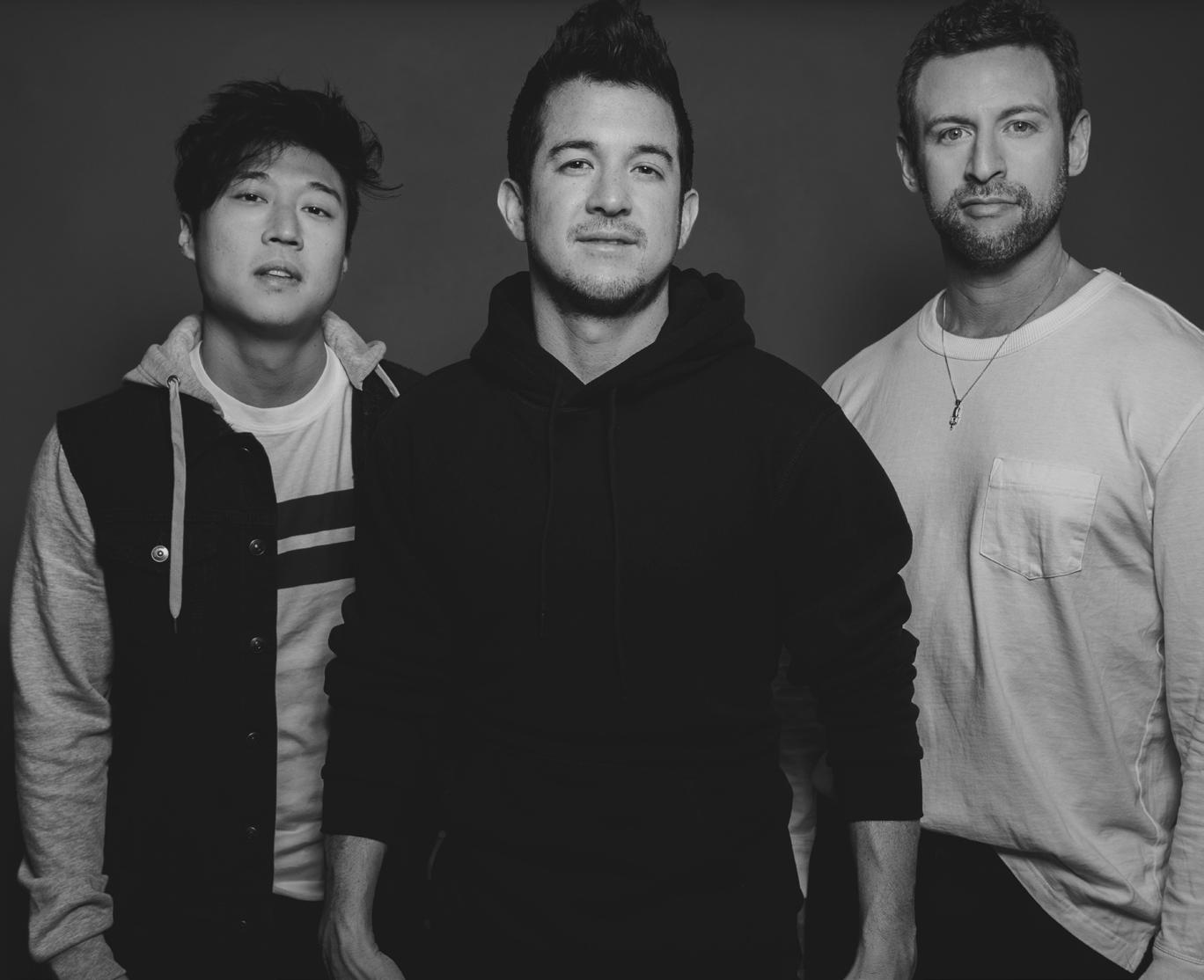
Defying convention and boundaries, Time For Three stands at the busy intersection of Americana, modern pop, and classical music. To experience Time For Three (TF3) live is to hear the various eras, styles, and traditions of Western music fold in on themselves and emerge anew.
Winner of the 2019 American Pianists Association Jazz Award, multifaceted American jazz pianist and composer Emmet Cohen is in the vanguard of his generation’s advancement of music and the related arts.
SAMARA JOY
SUNDAY, MARCH 19, 2023
5 PM & 7 PM
GOITSE
FRIDAY, MARCH 3, 2023
6:30 PM & 8:30 PM
Gaelic Irish | Traditional Folk Rhythmic | Powerful
Goitse is back by popular demand! Get ready for a cracking good time in The JAI. The white-hot award-winning Irish quintet, Goitse, pronounced “Go-witcha,” brings a vibrant mix of Irish classic jigs and tunes with their own original compositions for an irrepressible Irish musical experience that opens your mind and moves your feet.
Weʼ ve expanded our Discovery Series to showcase the rising stars from the next generation of jazz musicians!


Our first ever Discovery Series jazz artist, Samara Joy, won the 2019 Sarah Vaughan International Jazz Vocal Competition. With a voice as smooth as velvet, Samara has already performed in many of the great jazz venues including Dizzy’s Club Coca Cola, The Blue Note, and Mezzrow, in addition to working with jazz greats such as Christian McBride, Pasquale Grasso, Kirk Lightsey, Cyrus Chestnut, and NEA Jazz Master Dr. Barry Harris.

La Jolla Music Society is proud to announce our new food & beverage partner GRNFC Hospitality Group, founded by one of San Diego’s most established chef/ restaurateurs, Giuseppe Ciuffa. You can look forward to a revamped small bites menu, delicious new cocktails, and the opportunity to order before you arrive! Giuseppe’s at The Conrad is the perfect culinary pairing to your musical experience.

38 THE CONRAD / LA JOLLA MUSIC SOCIETY · 2022-23 SEASON
ALFREDO RODRÍGUEZ TRIO
SATURDAY, DECEMBER 17, 2022
6:30 PM & 8:30 PM Jazz Piano | Latin

Discovered at the 2006 Montreux Jazz Festival by Quincy Jones, Cuban-born GRAMMY® Award nominee Alfredo Rodríguez has rapidly risen to stardom under the tutelage of the famed producer. Since arriving in the US in 2009, Rodríguez has appeared on prestigious stages such as the Playboy Jazz Festival at the Hollywood Bowl and the Gilmore Keyboard Festival.
SCOTT SILVEN WONDERS
SATURDAY, MARCH 25, 2023
3 PM & 8 PM SUNDAY, MARCH 26, 2023
3 PM & 6 PM
An unforgettable performance of awe-inspiring intrigue.
As a child, Scott Silven reveled in mystery. This innate fascination with the enigmatic and unexplainable guided him to the craft of illusion at a young age, and evoked a sense of wonder that he knew he had to share with others. Wonders is a show for these extraordinary times; a shared experience that explores the power of connection through unforgettable illusions. Silven is a modern-day marvel like no other, at the top of his profession.
JIMMIE HERROD
SUNDAY, JUNE 4, 2023
5 PM & 7 PM
DAVINA & THE VAGABONDS

SATURDAY, JANUARY 14, 2023
6:30 PM & 8:30 PM
American Songbook | Jazz | Blues | Retro

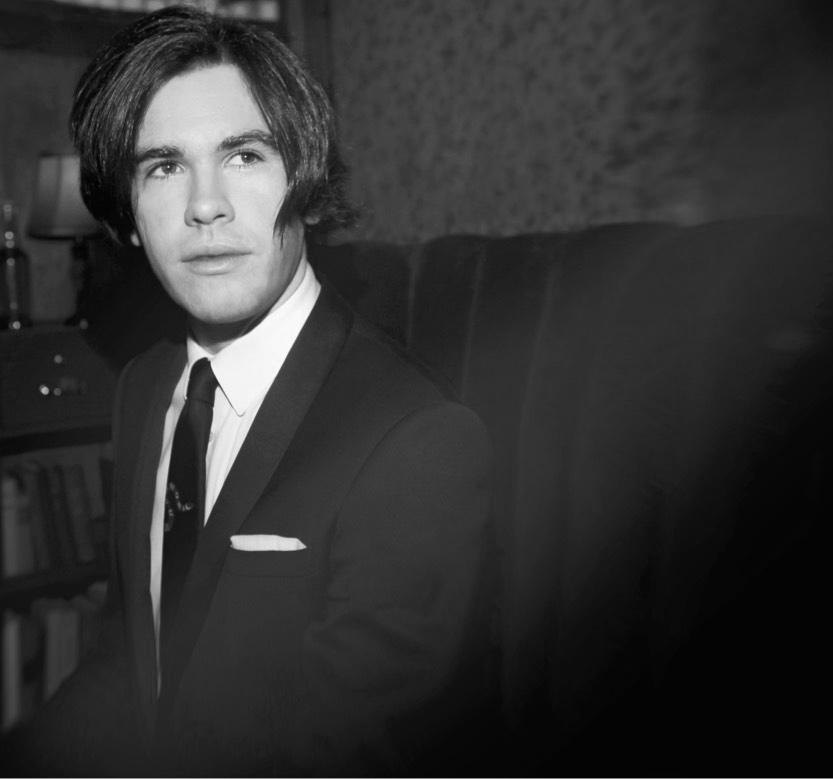
Bluesy, blustery, bawdy and irresistibly fun, Davina & The Vagabonds have carved their own niche in the blues world with their high-energy live performances and rollicking compositions. Lead singer Davina Lozier’s voice and stage presence defy category, with elements of boogie-woogie, ragtime, early rock, and beyond.
MAK GRGIC´ CINEMA VERISMO
SATURDAY, MAY 13, 2023
6:30 PM & 8:30 PM
Mak Grgic´ , proclaimed “imaginative, gifted and expressive” by the New York Times and a “guitarist to keep an eye on” by the Washington Post, is an innovative player who programs music as far-reaching as works from the avant-garde to the great classics of guitar repertoire and early works. This program takes listeners down memory lane by offering originals and adaptations of music featured in films such as The Deerhunter, Raging Bull, The Godfather, Chariots of Fire, Vicky Cristina Barcelona, and many others.
Described by The Seattle Times as “a voice like a beacon of hope,” Jimmie Herrod has been bringing audiences to their feet with his miraculous, transporting voice (and dazzling smile) since he started touring with Pink Martini. Hear Jimmie Herrod, Golden Buzzer winner during the 2021 season of Americaʼs Got Talent, in an intimate and mesmerizing evening of music.

TheConrad.org · 858.459.3728 39
CONCERTS DOWNTOWN
MONTEREY JAZZ FESTIVAL ON TOUR DEE DEE BRIDGEWATER, KURT ELLING, CHRISTIAN SANDS, LAKECIA BENJAMIN, CLARENCE PENN, YASUSHI NAKAMURA

THURSDAY, JANUARY 26, 2023 · 7:30 PM BALBOA THEATRE 6:30 PM Prelude · Interview hosted by Robert John Hughes
One of the world’s longest-running musical events, the Monterey Jazz Festival celebrates its 65th year with a once-in-a-lifetime ensemble. Featuring Tony and GRAMMY® Award-winning NEA Jazz Master vocalist Dee Dee Bridgewater alongside GRAMMY®Award-winning vocalist Kurt Elling and critically acclaimed rising star saxophonist Lakecia Benjamin, this stellar band is directed by visionary pianist Christian Sands and anchored by his longtime rhythm section, bassist Yasushi Nakamura and drummer Clarence Penn.
KODO
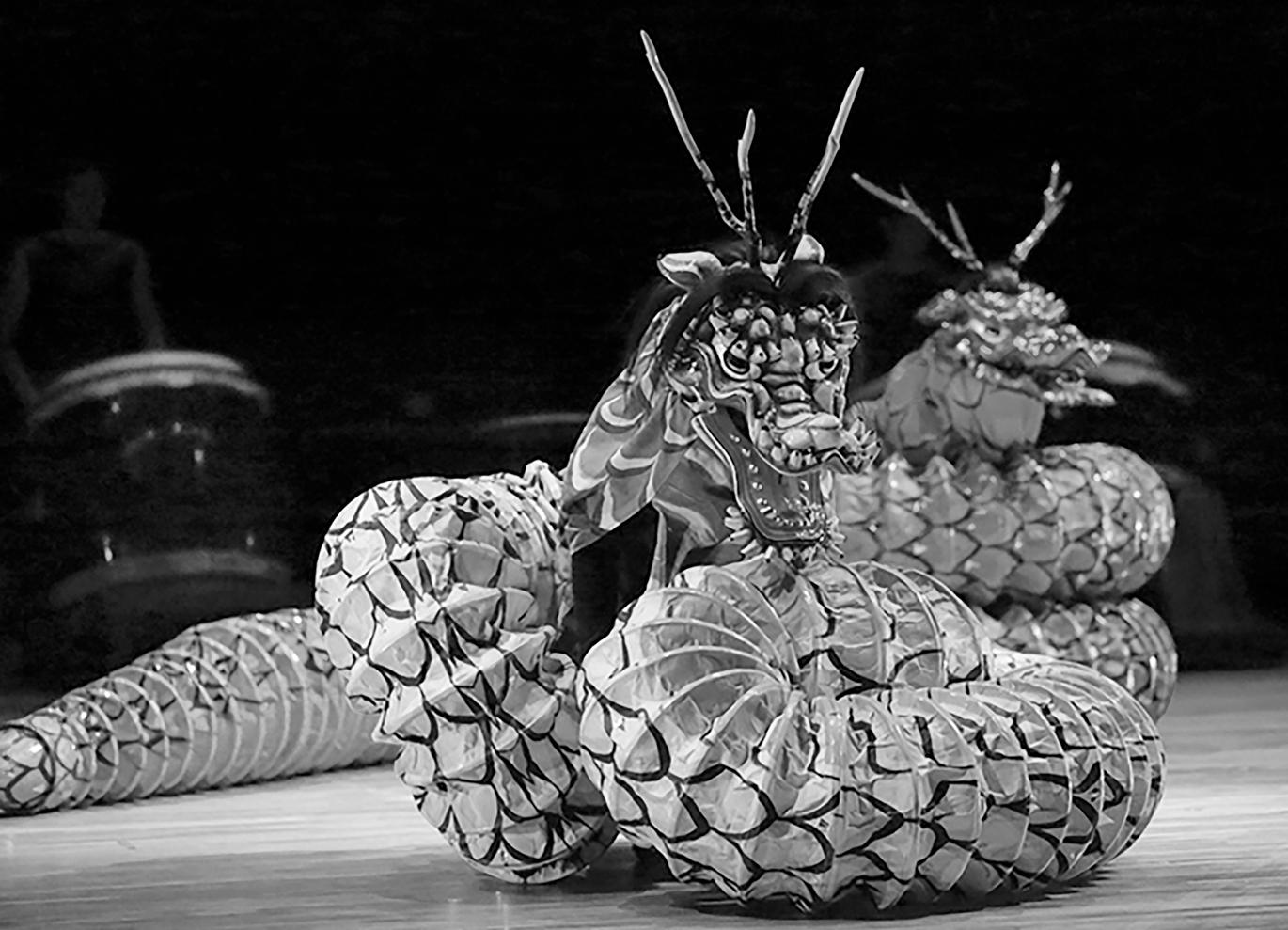
ONE EARTH TOUR 2023: TSUZUMI
SATURDAY, FEBRUARY 11, 2023 · 7:30 PM BALBOA THEATRE
For four decades, the Japanese group Kodo has shown off the extraordinary emotional and artistic range of the traditional taiko drum on stages around the world. Their new program Tsuzumi commemorates this incredible legacy, featuring pieces that trace their music back to the group’s origins.
ZAKIR HUSSAIN
MASTERS OF PERCUSSION
WEDNESDAY, MARCH 15, 2023 · 7:30 PM
BALBOA THEATRE
Drumming crosses cultures and unites us in the dance of the heart. An international phenomenon, GRAMMY® Award-winning tabla virtuoso Zakir Hussain is one of the foremost percussionists of the contemporary world. Widely recognized as a chief architect of the world music movement, Hussain has participated in historic collaborations, including Shakti, Remember Shakti, and his ever-changing musical feast, Masters of Percussion, a platform for rarely heard rhythm traditions from India. Over time, the Masters of Percussion ensemble has expanded to include great drummers and percussionists from many world traditions, including jazz, as well as the occasional stringed instrument.
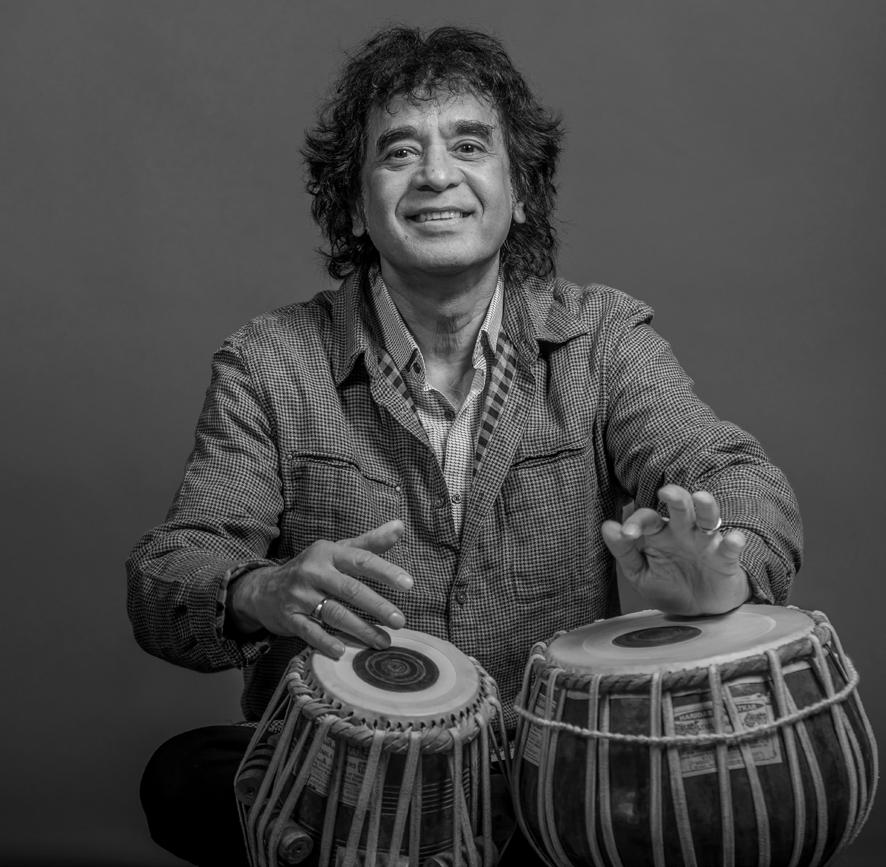
40 THE CONRAD / LA JOLLA MUSIC SOCIETY · 2022-23 SEASON
ALVIN AILEY® AMERICAN DANCE THEATER


TUESDAY, APRIL 4 & WEDNESDAY, APRIL 5, 2023 · 7:30 PM CIVIC THEATRE
You don’t just see an Alvin Ailey performance, you feel it. Alvin Ailey American Dance Theater has grown from a small group of African American dancers to a revolutionary company that transcends barriers and celebrates the African American cultural experience. In 2008, a U.S. Congressional resolution designated the company as “a vital American cultural ambassador to the world.”
Under the decade-long leadership of its visionary artistic director, Robert Battle, the company continues to honor the monumental legacy of its founder, while expanding the Ailey repertory and developing the next generation of choreographers. Alvin Ailey American Dance Theater will perform two programs, both including Ailey’s masterpiece Revelations.
YO-YO MA , cello & KATHRYN STOTT, piano
THURSDAY, APRIL 6, 2023 · 7:30 PM CIVIC THEATRE
6:30 PM Prelude · Lecture by Michael Gerdes
One of the most beloved musicians of our day and a dear friend of La Jolla Music Society, Yo-Yo Ma brings his unparalleled virtuosity, passion, and thoughtfulness to the Civic Theatre stage. Collaborating with acclaimed pianist Kathryn Stott, he will make this evening one to remember. Program to be announced.
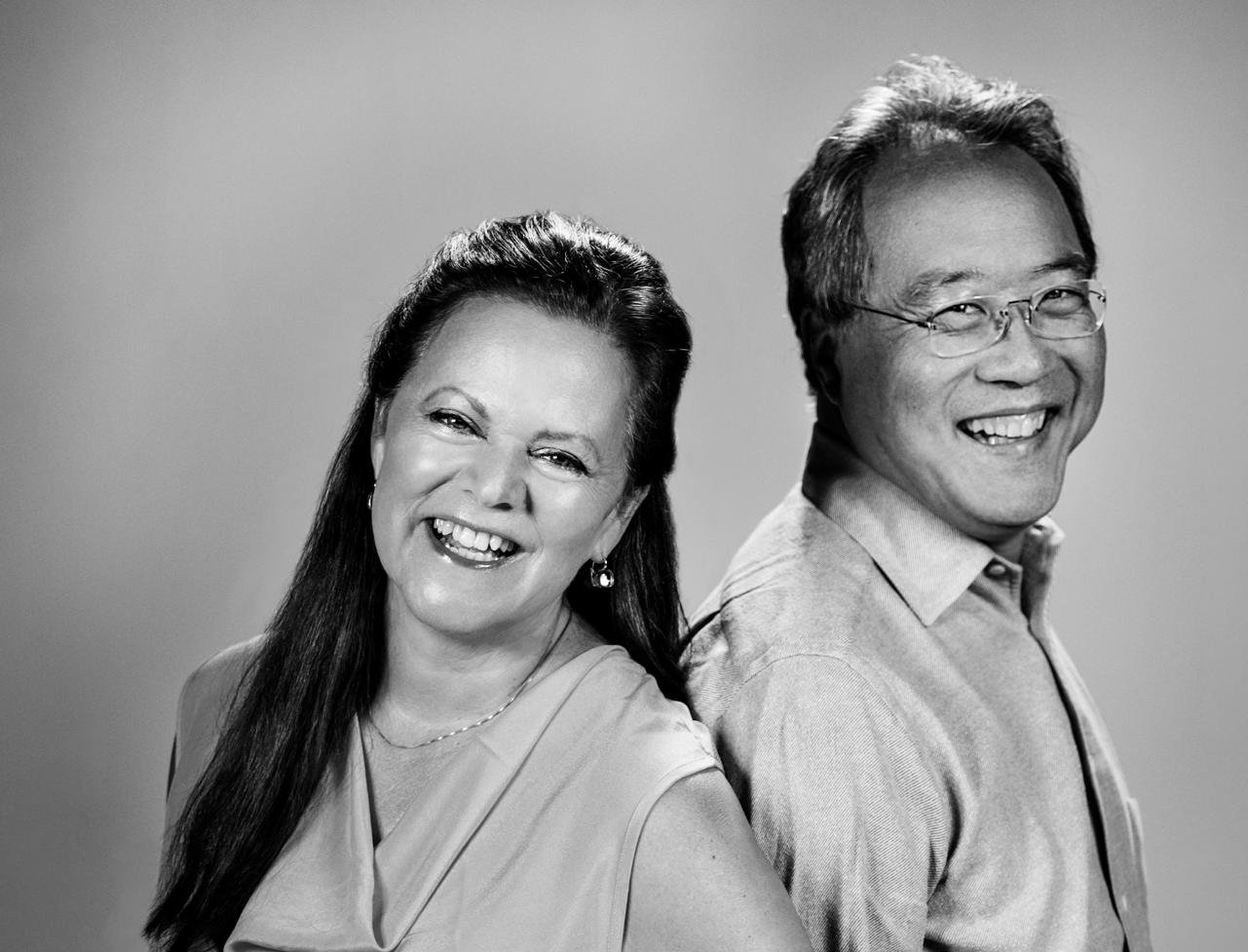
COMPLEXIONS
CONTEMPORARY BALLET
ARTIST-IN-RESIDENCE
STAR DUST: FROM BACH TO BOWIE
SATURDAY, MAY 20, 2023 · 7:30 PM CIVIC THEATRE
Founders Dwight Rhoden and Desmond Richardson, armed with a rich Alvin Ailey lineage and a cadre of 18 spectacular dancers, have re-envisioned ballet through technical precision, athletic prowess, and sheer passion. Their blockbuster hit, STAR DUST: From Bach to David Bowie, honoring two musical icons, has rocked the dance world and will make your spirits soar!
TheConrad.org · 858.459.3728 41
THE ConRAD KIDS series
JAZZREACH
Featuring Metta Quintet plus Students from Mission Bay High School

SATURDAY, OCTOBER 29, 2022 · 3 PM
THE BAKER-BAUM CONCERT HALL
Recommended for ages 6–10
In partnership with San Diego Unified School District’s Visual and Performing Arts Department, JazzReach’s critically acclaimed resident ensemble, Metta Quintet, culminates a four-day educational residency by performing with students from Mission Bay High School’s acclaimed music programs. A cohesive, tight-knit unit featuring some of today’s most esteemed creative artists, Metta Quintet is fueled by a collective, open-minded musical curiosity and dedicated to exploring new artistic territory while maintaining a passionate commitment to arts education, fostering new audiences, and nurturing young talent.
123 ANDRÉS
SATURDAY, JANUARY 28, 2023 · 10 AM & 11:30 AM
The JAI
Recommended for ages 2–6 Back by popular demand! 123 Andrés (pronounced “uno, dos, tres, Andrés”) are Latin GRAMMY® Award-winning teaching artists who get kids and families excited about learning and moving together in Spanish and English! Families sing, dance, and sound out with Andrés and Christina as they compose an eclectic mix of sounds from all corners of Latin America.

PIANIMAL
SATURDAY, MAY 6, 2023 · 10 AM & 11:30 AM
The JAI
Recommended for ages 5–10
Founded in 2011 by director Elizabeth Schumann and her sister, Sonya Schumann, Piano Theatre began as a collaboration to create a concert tour integrating literature, music, art, and multimedia for children. This project presents piano pieces, theatre, and artwork inspired by animals, with integrated live video projections and artwork to promote arts education. Pianimal includes the music of Dvorˇák, Grieg, Rimsky-Korsakov, Debussy, Scriabin, Dutilleux, Mussorgsky, and Saint-Saëns.
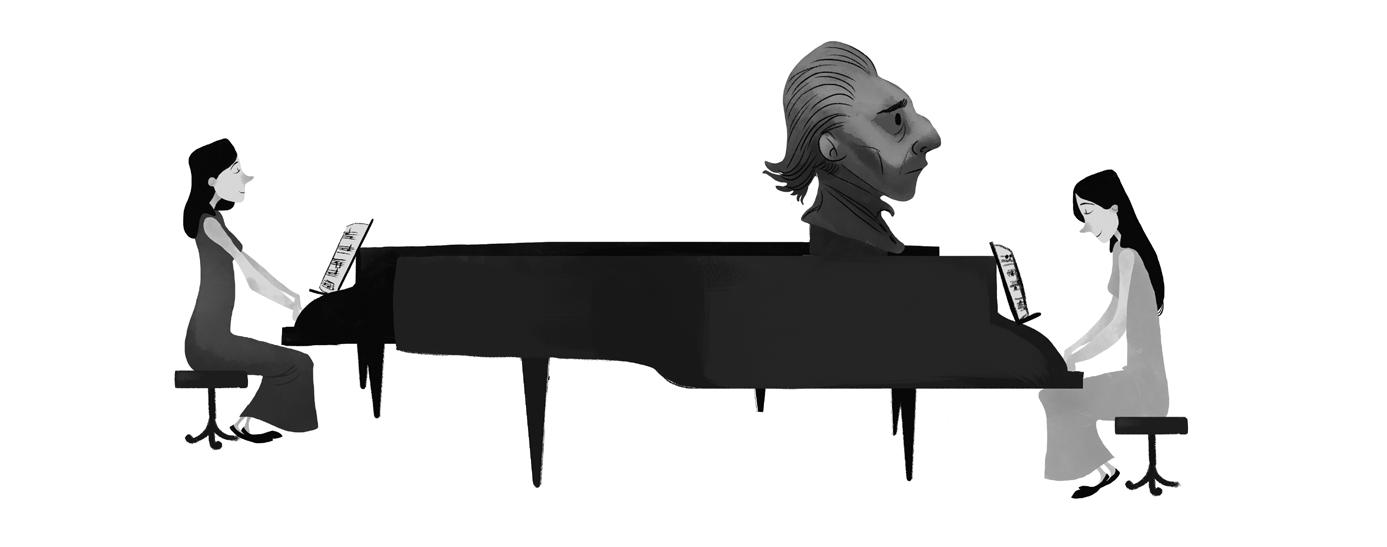
42 THE CONRAD / LA JOLLA MUSIC SOCIETY · 2022-23 SEASON
Apollon Musagète Quartet
The award-winning Apollon Musagète Quartet regularly collaborates with renowned chamber musicians such as Martin Fröst, Nils Mönkemeyer, István Várdai, and Jörg Widmann. They have appeared in symphonic series with BBC National Orchestra of Wales, BBC Symphony Orchestra, Dresden Philharmonic, and Polish National Radio Symphony Orchestra, and their recent engagements have taken them to the Auditori Barcelona, Konzerthaus and Philharmonie Berlin, Edinburgh International Festival, Gewandhaus Leipzig, Wigmore Hall, the Concertgebouw in Amsterdam, Carnegie Hall, and the Tonhalle Zurich. They have collaborated with Berlin-based performance group Nico and the Navigators, a ballet production at the National Theatre in Nuremberg, and a world tour with pop singer Tori Amos.

Kobie Boykins
Kobie Boykins is a principal mechanical engineer at NASA’s Jet Propulsion Laboratory (JPL) in Pasadena, California. Originally from Omaha, Nebraska, Boykins graduated Cum Laude from Rensselaer Polytechnic Institute in Troy, New York, before joining JPL. In more than twenty-five years at the lab, he has worked on the Pathfinder mission; built the solar arrays for the Mars Exploration Rovers Spirit, and Opport unity; led the mobility and remote sensing teams for the Mars Science Laboratory Rover Curi osity; and is serving as Chief Engineer on the Europa Clipper team. In 2013, Boykins received a NASA Exceptional Service Medal, one of the highest honors given to N ASA employees and contractors.
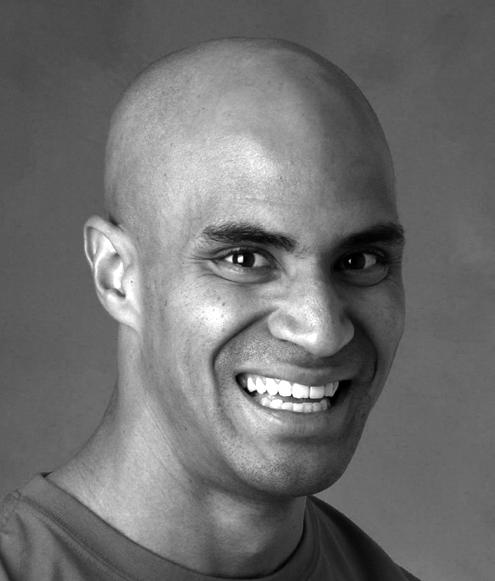
Michael Gerdes, lecturer

Michael Gerdes is Director of Orchestras at San Diego State Uni versity, where he conducts the San Diego State Symphony Orchestra, Chamber Orchestra, and Opera Orchestra. He earned his Bachelor of Music degree in Music Education and Bach elor of Arts Degree in Philosophy from Concordia College in Moorhead, Minnesota. Selec ted by the San Diego Union-Tribune as one of three “Faces to Watch in Classical Music” during his first year as Director of Orchestras, Gerdes is focused on creating a thriving orchestral community at San Diego State University.
Jess Gillam, saxophone
Jess Gillam is the first saxophonist to reach the finals of the BBC Young Musician competition and the youngest ever soloist to perform at the Las t Night of the Proms. Both of her albums to date have reached No. 1 in the UK Classic al Music Charts. Among her many awards is an MBE for Services to Music in the Queen’s Birthday Honours list 2021. Gillam has performed in prestigious concert halls and wit h world-class orchestras around the globe including the NDR Hannover, Gothenburg Symphony Orchestra, Iceland Symphony Orchestra, Minnesota Symphony Orchestra, Munich Philha rmonic, Lahti Symphony Orchestra, and the UK’s leading orchestras. She also tours with her Jess Gillam Ensemble. She is currently Artist in Residence at Wigmore Hall.

TheConrad.org · 858.459.3728 43 BIOGRAPHIES
Robert John Hughes, lecturer
Journalist, broadcaster, musician, author, record producer. Hughes has interviewed hundreds of musical artists in classical, jazz, pop, rock, R&B, and blues, including Sting, Wynton Marsalis, Bonnie Raitt, Paul Simon, B.B. King, Adele, and Peter Gabriel. As a record producer and member of the GRAMMY® Academy, Hughes has released five albums of live performances by artists heard on San Diego FM st ation 102.1 KPRi. Hughes has hosted La Jolla Music Society Preludes since 2018.
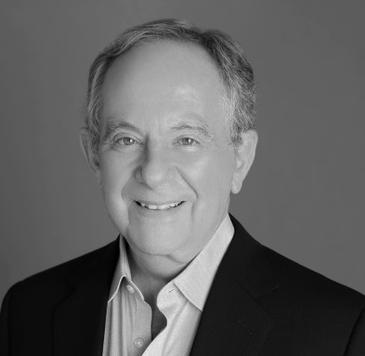
Randall Goosby, violin
American violinist Randall Goosby is the youngest recipient ever to win the Sphinx Concerto Competition. His 2021–22 season included debuts with the Los Angeles Philharmonic under Gustavo Dudamel at the Hollywood Bowl, Baltimore Symphony, Detroit Symphony, London Philharmonic Orchestra, and Philharmonia Orchestra. He made recital appearances at Wigmore Hall, the 92nd Street Y, Davies Symphony Hall, and Boston’s Isabella Stewart Gardner Museum. In June 2021 he released his debut album for Decca, Roots, a celebration of African-American music featuring three world premieres. Goosby has performed with orchestras across the United States including the New York Philharmonic, Cleveland Orchestra, Nashville Symphony, and New World Symphony. His recital appearances have included the Kennedy Center, Kravis Center, and Wigmore Hall.

Storm Large
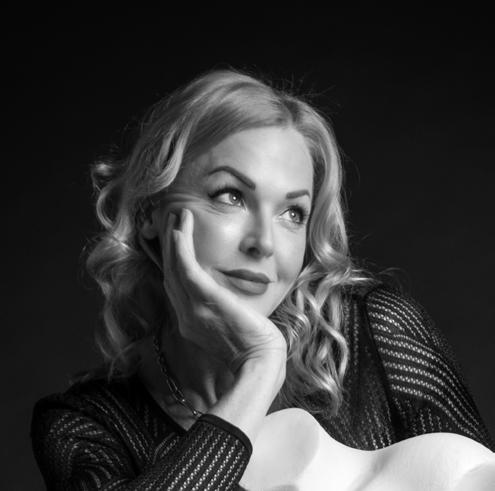
Musician, actor, author, and playwright Storm Large shot to national prominence in 2006 as a finalist on the CBS show Rock Star: Supernova , and in the 2021 season of America’s Got Talent . She has been guest vocalist with the band Pink Martini since 2011, recording and touring nationally and internationally. She has also sung with k.d. lang, Kirill Gerstein, John Doe, Rufus Wainwright, and George Clinton. Large has performed with the Philly Pops, the Chicago Symphony Orchestra, and the Seattle Symphony; the Houston, Detroit, Toronto, and BBC Symphonies; the New York Pops; and the Louisville Orchestra, with whom she recorded the 2017 album All In . Alongside Liza Minnelli and Joel Grey, Storm joined Michael Feinstein as special guest with the Pasadena Pops. She made her Carnegie Hal l debut in 2013, singing Weill’s Seven Deadly Sins with the Detroit Symphony.
Isabel Leonard, mezzo-soprano
Mezzo-soprano artist Isabel Leonard returned to The Metropolitan Opera in her role debut as Der Komponist in Ariadne auf Naxos , Cherubino in Le nozze di Figaro , and the title role of Cinderella. She also made her debut in the title role of Carmen in Francesca Zambello’s productions at Washington National Opera and Santa Fe Opera. Leonard regularly appears at the world’s leading opera houses including The Metropolitan Opera, Opéra National de Paris, Wiener Staatsoper, Los Angeles Opera, Bayerische Staatsoper, and San Francisco Opera, and collaborates with conductors such as Seiji Ozawa, Antonio Pappano, Gustavo Dudamel, EsaPekka Salonen, Yannick Nézét-Seguin, Edo de Waart, Marin Alsop, and Michael Tilson Thomas. Leonard was named recipient of the prestigious Richard Tucker Award and has won three GRAMMY ® Awards.
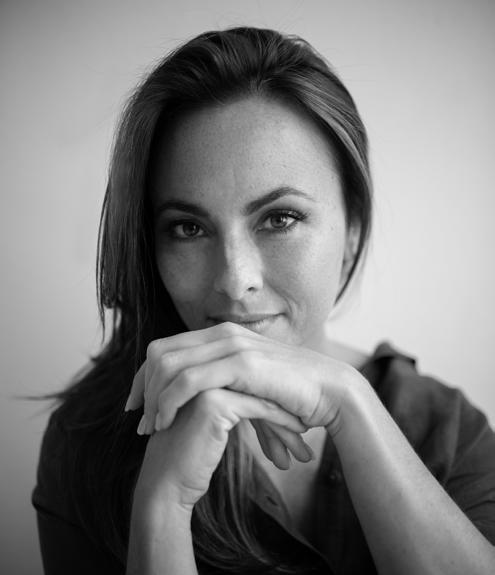
44 THE CONRAD / LA JOLLA MUSIC SOCIETY · 2022-23 SEASON BIOGRAPHIES
Kristi Brown Montesano, lecturer
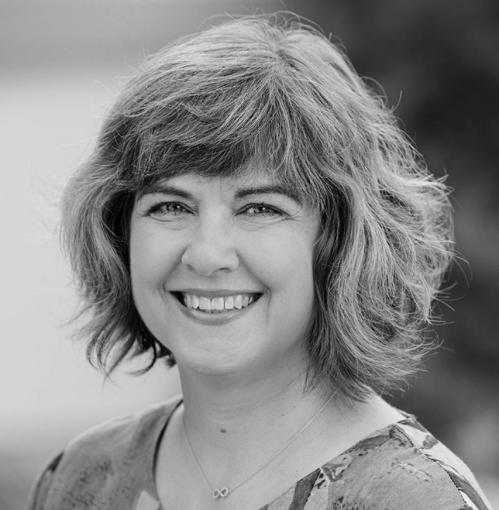
Dr. Kristi Brown-Montesano approaches graduate seminars, adult-education classes, podcasts, and pre-concert lectures with the same philosophy: th at offering context— rigorously researched, provocative, and humanistic—empowers listeners and musicians to make their own meaningful connections to classical music. Curre ntly Chair of Music History at the Colburn Conservatory and Lecturer in Musicology at UCLA, Dr. Brown-Montesano also has ongoing relationships with many of Southern California’s most distinguished musical organizations, including the Los Angeles Opera, Los Angeles Philharmonic, La Jolla Music Society, and the Philharmonic Society of Orange County. Her book, Understanding the Women of Mozart’s Operas , offers fresh critical takes on the female roles in the Da Pont e operas and The Magic Flute .
Garrick Ohlsson, piano
Last summer, pianist Garrick Ohlsson appeared with the Indianapolis and Cleveland orchestras, in recital in San Francisco, at the Brevard Festival, and Chicago’s Ravinia Festival. Most recently he performed with the KBS orchestra in Seoul followed by the Atlanta, Dallas, Seattle symphonies, BBC Glasgow, and orchestras in Prague, Hamburg, Lyon, and St. Petersburg, and in recital across the US and Europe. Ohlsson has collaborated with the Cleveland, Emerson, Tokyo, and Takacs string quartets. He can be heard on the Arabesque, RCA Victor Red Seal, Angel, BMG, Delos, Hänssler, Nonesuch, Telarc, Hyperion, and Virgin Classics labels.

Pablo Sáinz-Villegas, guitar
Pablo Sáinz-Villegas has been acclaimed by the international press as the successor of Andrés Segovia and an ambassador of Spanish culture to the world. Since his debut with the New York Philharmonic at Lincoln Center, he has performed in more than 40 countries and been invited to play with orchestras such as the Berlin Philharmonic, Chicago Symphony, Philharmonic of Israel, Los Angeles Philharmonic, and the National Orchestra of Spain. He has recorded a duo album with Plácido Domingo, as well as pa rticipating in the tribute held in Domingo’s honor at the Santiago Bernabéu stadium in Madrid and in a concert on a floating stage on the Amazon River, televised for millions around the world.

Poncho Sanchez
For more than three decades, conguero Poncho Sanchez has been a master of straight-ahead jazz, soul music, and melodies and rhythms from a variety of Latin American and South American sources. Throughout his career he has followed in the steps of innovators such as Mongo Santamaria, Tito Puente, and Cal Tjader, while incorporating the influence of iconic saxophonist John Coltrane. On his latest album Trane’s Delight , Sanchez pays tribute to the late jazz legend with Latin-tinged reimaginings of Coltrane classics as well as new pieces composed in honor of the tenor titan. Trane’s Delight continues Sanchez’s 37-year relationship with Concord, a legacy that has now yielded 27 alb ums. In 1999, Sanchez’s album Latin Soul received a GRAMMY ® Award as Best Latin Album.
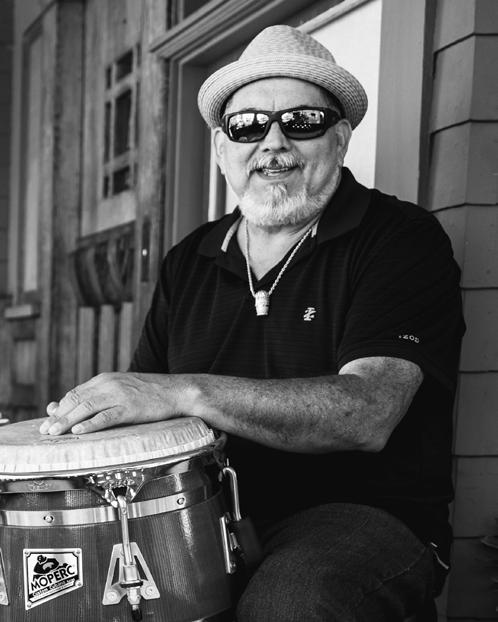
TheConrad.org · 858.459.3728 45
BIOGRAPHIES
Daniil Trifonov, piano

Pianist Daniil Trifonov, Musical America’s 2019 Artist of the Year, won the GRAMMY ® Award for Best Instrumental Solo Album of 2018. As well as giving European and U.S. recitals tours, Trifonov recently performed Brahms’ First Piano Concerto with the Dallas Symphony and Philharmonia Zurich, Mozart’s Ninth “Jeunehomme” Piano Concerto on a European tour with the Orchestra dell’Accademia Nazionale di Santa Cecilia, and all five Beethoven’s Piano Concertos with orchestras including the New York Philharmonic, Munich Philharmonic, and Toronto Symphony. In 2016 Trifonov was named Gramophone’s Artist of the Year and in 2021 a Chevalier de l’Ordre des Arts et des Lettres by the French government. He is the winner of First Prize in Tel Aviv’s Rubinstein Competition and both First Prize and Grand Prix in Moscow’s Tchaikovsky Competition.
Zhu Wang, piano
Pianist Zhu Wang was awarded First Prize in the 2020 Young Concert Artists International Auditions, among many other awards and competitions. This season Wang made his debuts at Carnegie Hall’s Zankel Hall and Kennedy Center’s Terrace Theater. His New York debut made the New York Times’ “Best of Classical Music 2021” list. He has performed in China, Italy, Poland, Japan, and across the US at prestigious venues including the Kennedy Center, Carnegie Hall, the Berliner Philharmonie, Warsaw Philharmonic Concert Hall, Shanghai Concert Hall, Chicago Cultural Center, and the Morgan Library. Also an active chamber musician and champion of new music, Wang performed the world premiere of American composer Timo Andres’ Moving Etúdes on his national tour.
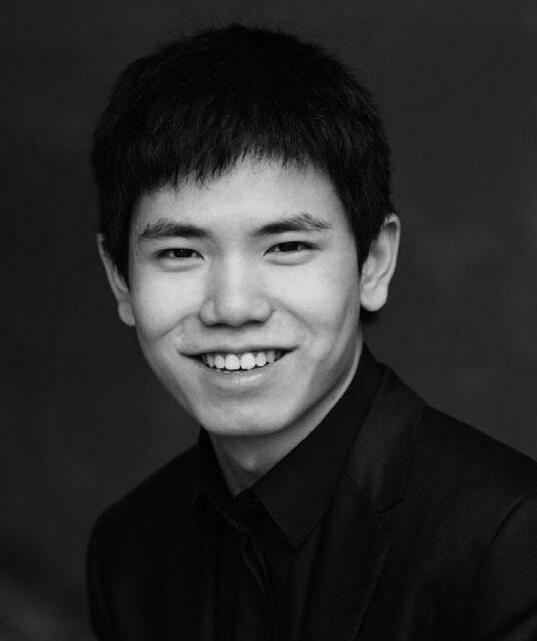
The War and Treaty
The War And Treaty have amassed a following as eclectic as their sound itself with “voices that will stop you in your tracks” (Garden and Gun) and their bluesy but joyful fusion of Southern soul, gospel, Country, and rock-and-roll. The husband-and-wife team of Michael Trotter Jr. and Tanya Trotter “continue their commando, no-limits journey to the top of the music world” (Associated Press) following their latest widely acclaimed release, Hearts Town The versatile duo has opened for artists such as Al Green, Brandi Carlile, Jason Isbell, John Legend, and Lauren Daigle, while their multifaceted collaborative efforts include Dierks Bentley, Elvis Costello, Emmylou Harris, Leslie Jordan, Mumford & Sons, Nitty Gritty Dirt Band, and Sturgill Simpson. They were named 2021 International Folk Music Awards Artist of the Year and Americana Music Association’s 2019 Emerging Artist of the Year.
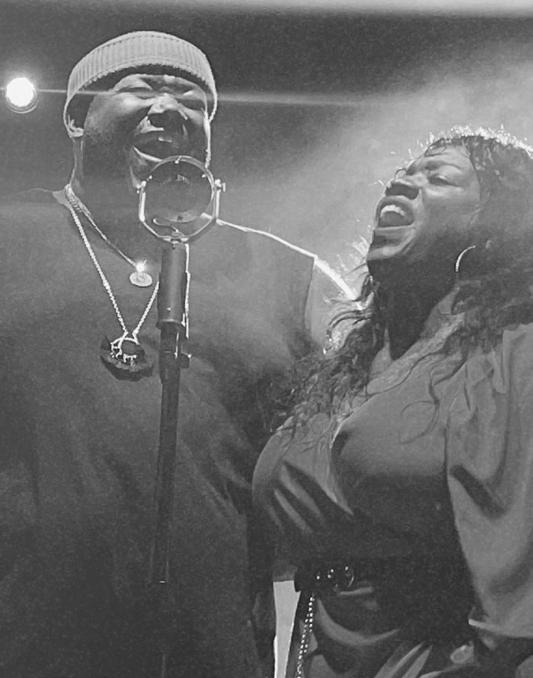
Thomas Weaver, piano
Thomas Weaver is an American pianist and composer currently on the faculty at the Curtis Institute of Music and the Boston University Tanglewood Institute. He regularly performs in many concert halls, including New York’s Carnegie Hall, Greene Space, Lincoln Center, and Merkin Hall; Washington DC’s Phillips Collection; Boston’s Jordan Hall; and in Chicago, Nashville, Dallas, Tanglewood, and Berlin. He has performed with eminent musicians including Elmira Darvarova, Jess Gillam, Kenneth Radnofsky, Jennifer Frautschi, Gene Pokorny, and members of the Metropolitan Opera Orchestra, New York Philharmonic, Philadelphia Orchestra, Boston Symphony Orchestra, and others. Weaver is currently a member of the Amram Ensemble, Trio Ardente, and New England Chamber Players.

46 THE CONRAD / LA JOLLA MUSIC SOCIETY · 2022-23 SEASON BIOGRAPHIES
THANK YOU!
The wonderful array of musical activity that La Jolla Music Society offers would not be possible without support from its family of donors. Your contributions to La Jolla Music Society help bridge the gap between income from ticket sales and the total cost to present the finest musicians and the best chamber music repertoire in San Diego. Your generosity also supports our programs in the local schools and throughout the community.

On the following pages La Jolla Music Society pays tribute to you, the leading players who make it possible to share the magic of the performing arts with our community.
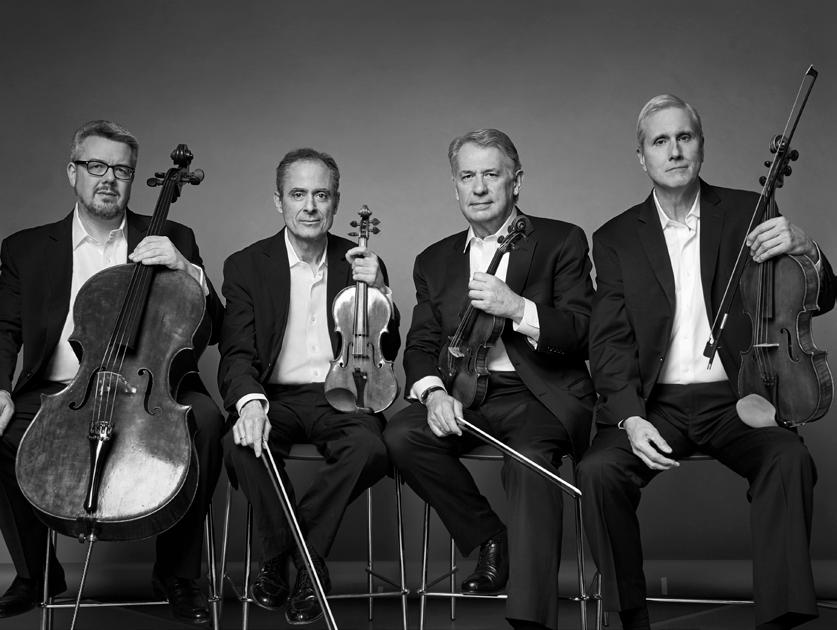
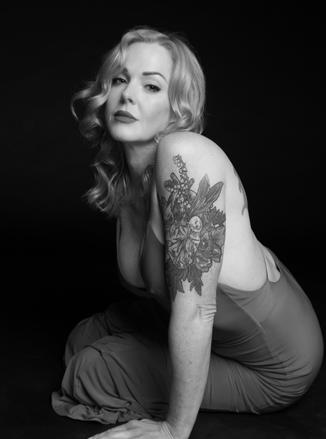

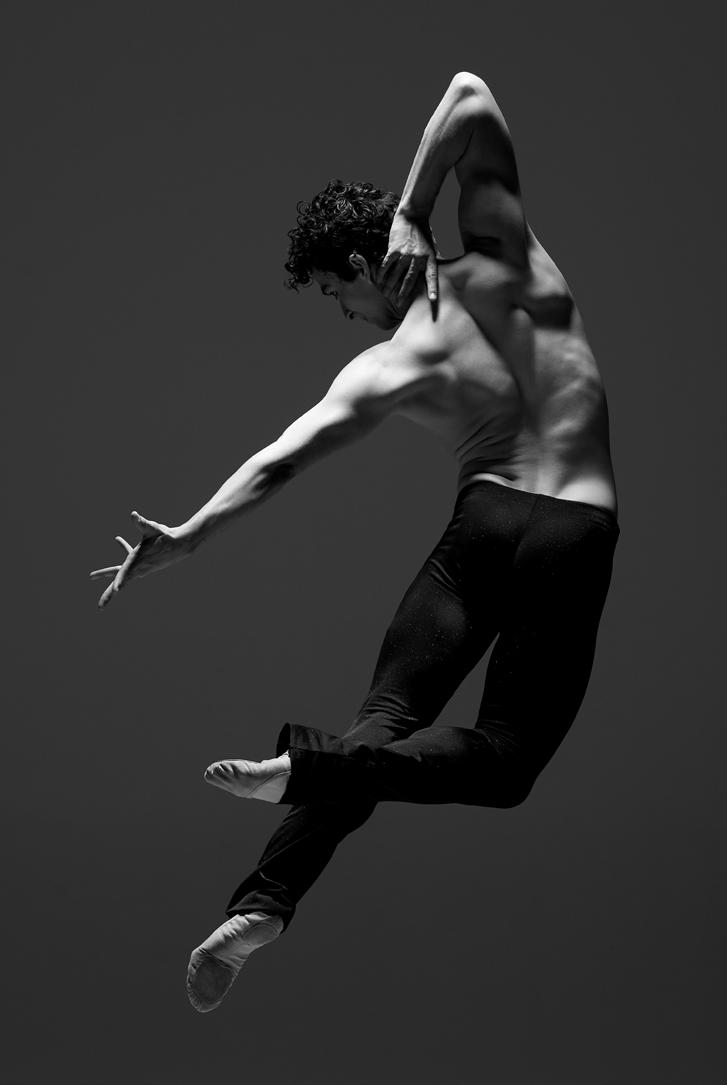
TheConrad.org · 858.459.3728 47
ANNUAL SUPPORT
La Jolla Music Society depends on contributed income for more than 60% of its annual budget. We are grateful to all of our contributors who share our enthusiams and passion for the arts. Every donor is a valued partner and they make it possible for one of San Diego’s premier music organization to present year-round.
It is our honor to recognize the following donors.
FOUNDER
($250,000 and above)
Brenda Baker and Stephen Baum
Raffaella and John Belanich
The Conrad Prebys Foundation
ANGEL
($100,000 - $249,999)
Mary Ellen Clark
Joan and Irwin Jacobs
Dorothea Laub Debra Turner
The City of San Diego Commission for Arts and Culture
Clara Wu Tsai and Joseph Tsai
BENEFACTOR
($50,000-$99,999)
Mary Ann Beyster
Ric and Eleanor Charlton
Peter Cooper and Erik Matwijkow
Julie and Bert Cornelison
Silvija and Brian Devine
Susan and Bill Hoehn
Vivian Lim and Joseph Wong Peggy and Peter Preuss
Marge and Neal Schmale
Haeyoung Kong Tang
Anna and Edward Yeung Bebe and Marvin Zigman
48 THE CONRAD / LA JOLLA MUSIC SOCIETY · 2022-23 SEASON
GUARANTOR
($25,000 - $49,999)
Anonymous
Banc of California | Stephen Gamp
Jim Beyster
Ginny and Bob Black Katherine and Dane Chapin Ann Parode Dynes and Robert Dynes
Lyndie and Sam Ersan
Jennifer and Kurt Eve Pam Farr and Buford Alexander Ingrid and Ted Friedmann Goldman Sachs
Jeanne Herberger
John Hesselink
Sue and John Major Arlene and Lou Navias Steven and Sylvia Ré Sheryl and Bob Scarano Mao and Doctor Bob Shillman Jeanette Stevens Vail Memorial Fund Sue and Peter Wagener
SUSTAINER
($15,000 - $24,999)
Anonymous (2)
Judith Bachner and Dr. Eric L. Lasley Cafe Coyote and Rancho Coyote Wines Sharon L. Cohen
Jendy Dennis Endowment Fund Nina and Robert Doede
The Hon. Diana Lady Dougan Monica Fimbres
Debby and Wain Fishburn
Sarah and Jay Flatley
Joy Frieman
Pam and Hal Fuson
Lehn and Richard Goetz
Brenda and Michael Goldbaum Helene and Keith Kim Monarch Cottage Robin and Hank Nordhoff
Arman Oruc and Dagmar Smek ProtoStar Foundation
Thomas Rasmussen and Clayton Lewis Patty Rome
Stacy and Don Rosenberg Leigh P. Ryan
Maureen and Thomas Shiftan Stephanie and Nick Stone Lise Wilson and Steve Strauss Dolly and Victor Woo
SUPPORTER
($10,000 - $14,999)
Bjorn Bjerede and Jo Kiernan Gordon Brodfuehrer
Una Davis and Jack McGrory Martha and Ed Dennis Barbara Enberg Sue and Chris Fan Sarah and Mike Garrison Margaret Stevens Grossman and Michael Grossman
Angelina and Fredrick Kleinbub Teddie Lewis ResMed Foundation
Bob and Nancy Selander Elizabeth Taft Abby and Ray Weiss
THE CONRAD
Since its opening on April 5, 2019, The Conrad Prebys Performing Arts Center has become the new heart of cultural, arts education, and community event activity in La Jolla. The Conrad is the permanent home of La Jolla Music Society and hosts world-class performances presented by LJMS as well as other San Diego arts presenters. Additionally, The Conrad is available for a wide range of conferences, corporate meetings, weddings, fundraisers, and private events.

TheConrad.org · 858.459.3728 49
ANNUAL SUPPORT
ANNUAL
AMBASSADOR
($5,000 - $9,999)
Anonymous (3)
Ingrid de Alba de Salazar and Hector Salazar-Reyes
Joan Jordan Bernstein
Carolyn Bertussi Karen and Jim Brailean
Li-Rong Lilly Cheng Grace and David Cherashore George Dennis
Debbe Deverill
Jill Esterbrooks and James Robbins
Peter Farrell Diane & Elliot Feuerstein
Beverly Frederick and Alan Springer Elaine Galinson and Herbert Solomon Buzz and Peg Gitelson Lisa Braun Glazer and Jeff Glazer Teresa and Harry Hixson Elisa and Rick Jaime
Theresa Jarvis Marilyn and Stephen Miles Elaine and Doug Muchmore Jeanne and Rick Norling
Oakmont Signature Living Virginia Oliver Susan Shirk and Samuel Popkin Mary and Scott Pringle Eva and Doug Richman Catherine Rivier Kathleen Roche-Tansey and David Tansey Gloria and Rod Stone Joyce and Ted Strauss Susan and Richard Ulevitch
Ayse Underhill Lynne and David Weinberg Jo and Howard Weiner Shara Williams and Benjamin Brand Mary and Joseph Witztum
AFICIONADO
($2,500 - $4,999)
Emily and Barry Berkov Susan and Ken Bien
Jerry and Bernice Blake Janice and Nelson Byrne
Charles Schwab | Derek Anthony Eric Cohen and Bill Coltellaro Naomi Fekini
Carrie Greenstein
Cheryl Hintzen-Gaines and Ira Gaines
David Hsieh
Margaret Jackson
Jerri-Ann and Gary Jacobs Susan and David Kabakoff
Jeeyoon Kim Ruth and Ronald Leonardi Diana and Eli Lombrozo Sarah Long and Simon Fang Kathleen and Ken Lundgren Maggie and Paul Meyer Gail and Edward Miller Daphne Nan Muchnic Robert and Allison Price Carol Randolph and Robert Caplan Gerald and Susan Slavet Jean Sullivan and David Nassif Ronald Wakefield Lisa Widmier Al and Armi Williams
ASSOCIATE
($1,000 - $2,499)
Anonymous
K Andrew Achterkirchen
Judith Adler
Dede and Mike Alpert Arleene Antin and Leonard Ozerkis Kenny Baca
Jeffrey Barnouw Mike Belanich Alicia Booth Isabel and Stuart Brown Raymond Chinn June Chocheles Anthony Chong and Annette Nguyen Chong
Ann Craig Peggy Cravens
Lu Dai
Ted Ebel and Jee Shin Beverly Fremont
Barbara and Paul Hirshman Ted Hoehn
Linda Howard Brett Johnson Edward Koczak Michael Krco
Viviana and Enrique Lombrozo
Eileen A Mason Michael Masser Ted McKinney
Susan and Doug McLeod
William Miller and Ida Houby Sandra Miner Norman Needel Michael O'Brien
Marty and David Pendarvis Ursula Pfeffer Sandra Redman Jean-Luc Robert Cassidy Robins Marilies Schoepflin Doreen and Myron Schonbrun Todd R. Schultz
Ronald Simon
William Smith and Carol Harter Norma Jo Thomas Yvonne Vaucher
Cynthia Weiler
Howard and Christy Zatkin Xiaomei Zhang
FRIEND
($500 - $999)
Anonymous (2)
John Bailey
Terence Balagia
Christopher Beach and Wesley Fata Ryan Bordelon
James W Burns Joseph Calvino
Bob Dawson Joseph Calvino
50 THE CONRAD / LA JOLLA MUSIC SOCIETY · 2022-23 SEASON
SUPPORT
Caroline DeMar
Renée and James Dunford
James Emerson
Lindsey and Steve Gamp
Martha and David Gilmer
Lynn Gorguze and Scott Peters
Nabil Hanna
Kara Hanning
Paul and George Hauer Nancy Hong and Ardem Patapoutian
Joanne Hutchinson
Dwight Kellogg
Jane and Steven Lahre Lewis Leicher Elizabeth Lucas Linda and Michael Mann
Virginia Meyer
Jeff Mueller
Andrea Oster William Purves and Don Schmidt
Cathy Rempel Vivian and Lou Ryan Jennifer Reilly Denise Selati
Annemarie and Leland Sprinkle Robin Stark
Victor A van Lint Suhaila White Symphorosa Williams Marty and Olivia Winkler Susan and Gavin Zau
ENTHUSIAST
($250 - $499)
Anonymous
Alison Alpert
Hiroko Baba
Inon Barnatan and Jason Feldman
Laura Birns
Roanna Canete
Michael Casey
Jugo Cassirer Kimberly Chevallier
Linda Christensen and Gonzalo Ballon-Landa Harris Cohen
Candy Coleman
Courtney Coyle and Steven McDonald
Jeane Erley
Robert C. Fahey
Stephen Feldman Clare Friedman
Ferdinand Marcus Gasang Morris and Phyllis Gold
Andrea Harris
Rodger Heglar Matthew Herman Linda and Ed Janon Michael Kalichman
Zoe and Eric Kleinbub Melvin Knyper Patricia M. Lending Vonnie Madigan
Robert L. Mazalewski Christopher Moore Kylie Murphy Joani Nelson
Gary P. Poon Barbara Rosen Cynthia Rosenthal Jon M. Rosenthal Leah Rosenthal and Matthew Geaman Anne Rudolph Hannah Schlachet Morton and Marjorie Shaevitz Bob Stefanko Anne Turhollow N.B. Varlotta Colleen Vasquez Jian Wang Ian A. Wilson Sandra Zarcades
Bill Ziebron Bart Ziegler
CONTRIBUTOR
($150 - $249)
Mary Lonsdale Baker
Harold G Brittain
Linda Brown
Adam Byrnes
James and Carol Carlisle
Marjorie Coburn
Jennifer Cuthrell Martha Davis
Kathy Fackler
Allison Gardenswartz
Renita Greenberg Susan Halliday David Halter
John Higbee George and Julia Katz H. Koshkarian John Krasno
Marti Kutnik
Joni LeSage Elaine Litton Eduardo Macagno Jasmine Majid Patricia Manners
Joanne Martin Roderick Graham Mclennan Elinor Merl
Melvin Okamura Michael Pendarvis Linda Platt
Lynn Reineman
Judy Robbins
Teri and Eduardo Rodriguez Susan F Sharin
Katie M Smith
Judith Springer
Lee Talner
Junko Vajda
Nathan Vandergift
Margaretha Walk Donna Weston
This list is current as of September 2, 2022. We regret any errors. Please contact Natéa Cooke at NCooke@LJMS.org or 858.526.3445 to make a correction.
TheConrad.org · 858.459.3728 51
ANNUAL SUPPORT
MEDALLION SOCIETY
CROWN JEWEL
Brenda Baker and Steve Baum
DIAMOND
Raffaella and John Belanich
Mary Ellen Clark
Dorothea Laub
Joan and Irwin Jacobs
RUBY
Silvija and Brian Devine
EMERALD
Arlene and Louis Navias
GARNET
Julie and Bert Cornelison
Peggy and Peter Preuss
SAPPHIRE
John Hesselink
Keith and Helen Kim Bebe and Marvin Zigman
TOPAZ
Anonymous
Joan Jordan Bernstein
Mary Ann Beyster
Virginia and Robert Black
Dr. James C. and Karen A. Brailean
Barbara Enberg
Pam and Hal Fuson Buzz and Peg Gitelson
Drs. Lisa Braun-Glazer and Jeff Glazer
Margaret Stevens Grossman and Michael Grossman
Theresa Jarvis
Angelina and Fred Kleinbub
Vivian Lim and Joseph Wong Kathleen and Ken Lundgren Elaine and Doug Muchmore Don and Stacy Rosenberg
Leigh P. Ryan
Neal and Marge Schmale
Jeanette Stevens Gloria and Rodney Stone Sue and Peter Waganer
Dolly and Victor Woo
DANCE SOCIETY
GRAND JETÉ
Jeanette Stevens
Marvin and Bebe Zigman
POINTE
Carolyn Bertussi
PLIÉ
Mary Ann Beyster
Laura Birns
Amber Bliss
Anaelvia Sanchez and Harold Brittain
Gordon Brodfuehrer
Joseph Calvino
Eleanor and Ric Charlton
Mary Ellen Clark
Courtney Coyle
Jennifer and Vernon Cuthrell Joy Frieman
Wendy Frieman
Allison and Daniel Gardenswartz
Renita Greenberg
Susan and Bill Hoehn
Joanne Martin
Laura McWilliams Cynthia Rosenthal Katie Smith
Stephanie and Nick Stone
Sue and Peter Wagener
Samatha Zauscher
We are honored to have this extraordinary group of friends who have made multi-year commitments to La Jolla Music Society, ensuring that the artistic quality and vision we bring to the community continues to grow.
We are grateful for each patron for their passion and support of our dance programs.
52 THE CONRAD / LA JOLLA MUSIC SOCIETY · 2022-23 SEASON
PLANNED GIVING
LEGACY SOCIETY
Anonymous (2)
Brenda Baker and Steve Baum
June L. Bengston*
Joan Jordan Bernstein
Bjorn Bjerede and Jo Kiernan
Dr. James C. and Karen A. Brailean
Gordon Brodfuehrer
Wendy Brody*
Barbara Buskin*
Trevor Callan
Geoff and Shem Clow
Anne and Robert Conn
George and Cari Damoose
Teresa and Merle Fischlowitz
Ted and Ingrid Friedmann
Joy and Ed* Frieman
Sally Fuller
Maxwell H. and Muriel S. Gluck*
Dr. Trude Hollander*
Eric Lasley
Theodora Lewis
Joani Nelson
Maria and Dr. Philippe Prokocimer
Bill Purves
Darren and Bree Reinig
Jay W. Richen*
Leigh P. Ryan
Jack* and Joan Salb
Johanna Schiavoni
Pat Shank
Drs. Joseph and Gloria Shurman
Karen and Christopher Sickels
Jeanette Stevens
Elizabeth and Joseph* Taft
Norma Jo Thomas
Dr. Yvonne E. Vaucher
Lucy and Ruprecht von Buttlar
Ronald Wakefield
John B. and Cathy Weil
Carolyn Yorston-Wellcome* and
H. Barden Wellcome*
Karl and Joan Zeisler
Josephine Zolin
REMEMBERING LJMS IN YOUR WILL
It is easy to make a bequest to La Jolla Music Society, and any amount makes a difference.
Here is a sample of language that can be incorporated into your will:
“I hereby give ___% of my estate (or specific assets) to La Jolla Music Society, Tax ID 27-3147181, 7600 Fay Avenue, La Jolla, CA 92037, for its artistic programs (or education, general operating, or where needed most).
The Legacy Society recognizes those generous individuals who have chosen to provide for La Jolla Music Society’s future. Members have remembered La Jolla Music Society in their estate plans in many ways—through their wills, retirement gifts, life income plans, and many other creative planned giving arrangements. We thank them for their vision and hope you will join this very special group of friends. If you have included LJMS in your estate plans, please let us know so we may recognize you.
*In memoriam
TheConrad.org · 858.459.3728 53
The Blachford-Cooper Foundation
The Catalyst Foundation:
The Hon. Diana Lady Dougan
The Clark Family Trust
Enberg Family Charitable Foundation
The Epstein Family Foundation: Phyllis Epstein
The Fidelity Charitable Gift Fund:
The Carroll Family Fund
Drs. Edward & Martha Dennis Fund
Sue & Chris Fan
Don & Stacy Rosenberg
Shillman Charitable Trust

Richard and Beverly Fink Family Foundation
Inspiration Fund at the San Diego Foundation:
Frank & Victoria Hobbs
The Jewish Community Foundation:
Jendy Dennis Endowment Fund
Diane & Elliot Feuerstein Fund
Galinson Family Fund
Lawrence & Bryna Haber Fund
Joan & Irwin Jacobs Fund Warren & Karen Kessler Fund
Theodora F. Lewis Fund
Liwerant Family Fund
The Allison & Robert Price Family Foundation Fund John & Cathy Weil Fund
The Stephen Warren Miles and Marilyn Miles Foundation
Rancho Santa Fe Foundation:
The Fenley Family Fund
The Susan & John Major Fund
The Oliphant Fund
The San Diego Foundation:
The Beyster Family Foundation Fund
The M.A. Beyster Fund II
The Karen A. & James C. Brailean Fund
The Hom Family Fund
The Scarano Family Fund
The Shiftan Family Fund
Schwab Fund for Charitable Giving: Ted McKinney & Frank Palmerino Fund
The Shillman Foundation
The Haeyoung Kong Tang Foundation

Vail Memorial Fund
Thomas and Nell Waltz Family Foundation
The John H. Warner Jr. and Helga M. Warner Foundation
GIFTS IN HONOR/MEMORY
In Memory of Kenneth Rind, husband of Linda Chester: Susan & Richard Ulevitch
In Honor of Todd Schultz:
Brenda Baker & Steve Baum
Christopher Beach & Wesley Fata
Mary Ann Beyster
Pam & Hal Fuson
Steve Gamp
Teresa & Harry Hixson
Elaine & Doug Muchmore
Jeanette Stevens
Susan & Richard Ulevitch Dolly & Victor Woo
Bebe & Marvin Zigman
SERVING OUR COMMUNITY
La Jolla Music Society reaches over 11,000 students and community members annually. LJMS works with students from more than 60 schools and universities, providing concert tickets, performance demonstrations, and master classes. Thanks to the generous support of our patrons and donors, all of our outreach activities are free to the people we serve.
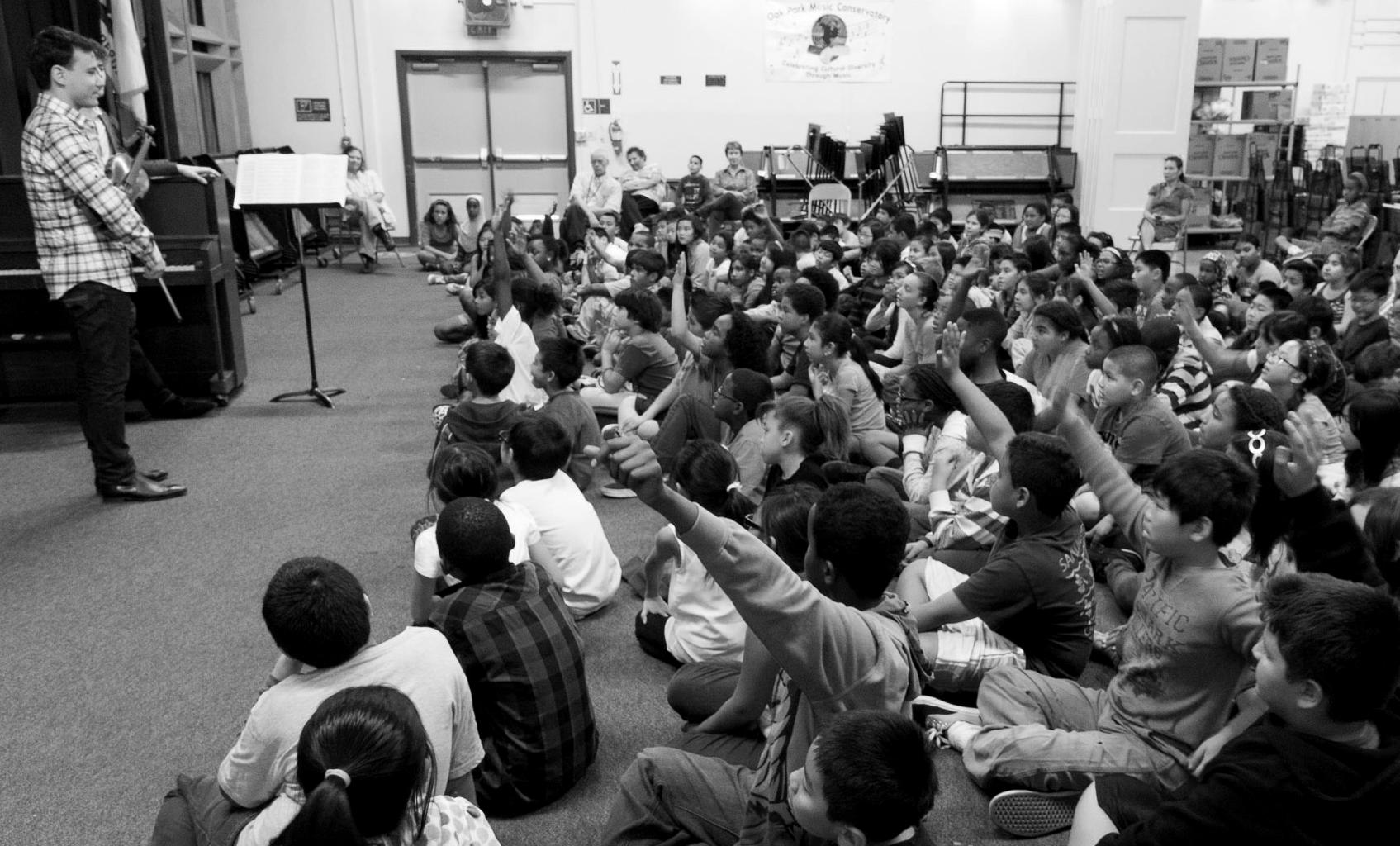
54 THE CONRAD / LA JOLLA MUSIC SOCIETY · 2022-23 SEASON
FOUNDATIONS









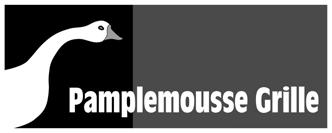
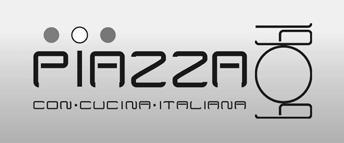







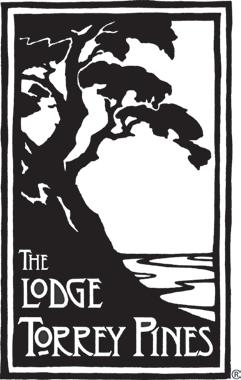






TheConrad.org · 858.459.3728 55 CORPORATE & FOUNDATION SPONSORS VAIL MEMORIAL FUND CORPORATE PARTNERS
PUBLIC
La Jolla Music Society thanks all of our generous patrons and supporters—including government funding—who support our artistic, education and community engagement programs.
Support of our 2022-23 Season is provided by:
Thank you to The City of San Diego Commission for Arts and Culture for promoting, encouraging and increasing support for the region's artistic and cultural assets, integrating arts and culture into community life and showcasing San Diego as an international tourist destination.

56 THE CONRAD / LA JOLLA MUSIC SOCIETY · 2022-23 SEASON
SUPPORT PHOTO CREDITS: Pg.12: The Baker-Baum Concert Hall © Steve Uzzell; Pg.13: T. Schultz © David Poller; Pg.14: G. Ohlsson © Dario Acosta, Apollon Musagéte Quartet courtesy of artists; Pg.17: J. Gillam courtesy of artist; Pg. 22: The War & Treaty courtesy of artists; Pg. 23: Curiosity Rover © courtesy of NASA JPL-Caltech; Pg. 24: D. Trifonov © Dario Acosta; Pg. 28: P. Sainz-Villegas © Lisa Mazzucco, I. Leonard © Sergio Kurhajec; Pg. 32: R. Goosby © Kaupo Kikkas, Pg. 36: S. Large © Laura Domela, Pg. 37: P. Sanchez © Estevan Oriol; Pg. 38 & 39: Time for Three © Lauren Desberg, Goitse courtesy of artists, Emmet Cohen Trio © Gabriela Gabrielaa, S. Silven © Jeff Smith, A. Rodríguez © Anna Webber, S. Joy courtesy of artist, D. Lozier © Christi Williams, M. Grgic © Anthony Avellano, J. Herrod courtesy of artist; Pg. 40 & 41: D. Bridgewater © Mark Higashino, Kodo performers © Takashi Okamoto, Zakir Hussain © Paul Joseph, Alvin Ailey American Dance Theater’s J. Harris © Dario Calmese, Y. Ma and K. Stott © Mark Mann, Complexions performers © Sharon Bradford; Pg. 42: Metta Quintet courtesy of artists, 123 Andres © Dominic Williams, Pianimal courtesy of artists; Pgs. 43-46 : Apollon Musagéte Quartet courtesy of artists, K. Boykins © courtesy of NASA JPL-Caltech, M.Gerdes courtesy of artist, J. Gillam courtesy of artist, R. Goosby © Kaupo Kikkas, S. Large © Laura Domela, I. Leonard © Michael Thomas, K. Brown Montesano © Elisa Ferrari, G. Ohlsson © Dario Acosta, P. Sáinz-Villegas © Lisa Mazzucco, P. Sanchez © Estevan Oriol, D. Trifonov © Dario Acosta, Z. Wang courtesy of artist, The War & Treaty © Pam English, T. Weaver © Stratton McCrady
JOIN OUR FAMILY
For more than 50 years, La Jolla Music Society has nurtured a love of music by keeping one vision in mind: To present diverse programs of great music performed by the best musicians in the world. Today, that vision has reached beyond the intimate beauty of the chamber music ensemble and into new and diverse offerings such as orchestras, jazz ensembles, dance companies, renowned speakers, and robust education programs.

This impressive growth has been carefully conducted by an active and highly committed volunteer board of directors and dedicated staff. But most importantly, La Jolla Music Society’s progress has been sustained by the generosity of the community and ticket buyers.
...with a gift today!
TheConrad.org/donate

To make a donation by phone or if you have are interested in sponsoring an artistic or education program, please contact
Ferdinand Gasang, Director of Development, at 858.526.3426 or FGasang@LJMS.org.

TheConrad.org · 858.459.3728 57
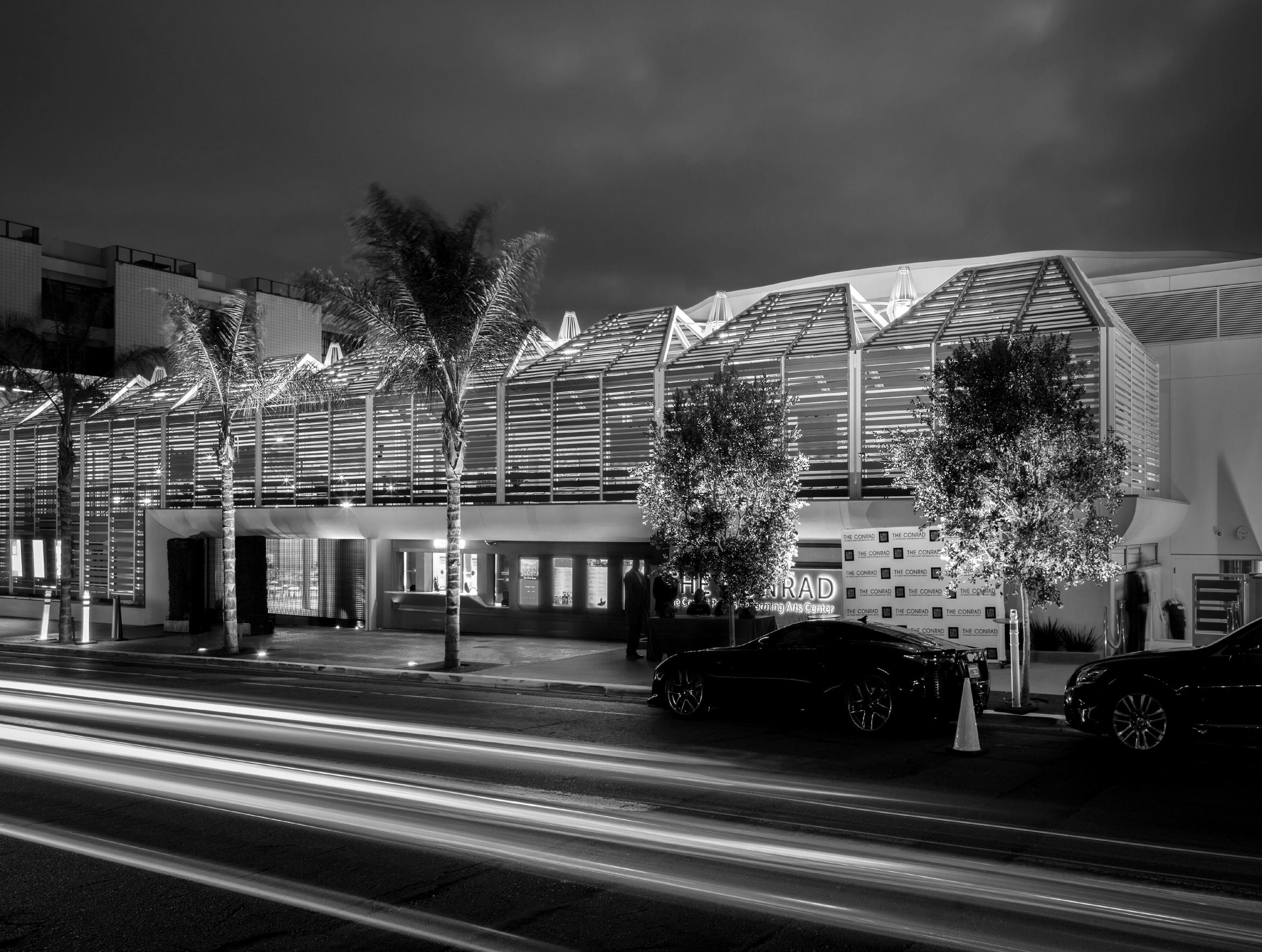
58 THE CONRAD / LA JOLLA MUSIC SOCIETY · 2022-23 SEASON Protect arts programming. Ensure a future filled with live performances. Donate Today TheConrad.org or call 858.459.3728 Resilience Fund THE CONRAD Home of La Jolla Music Society
BOOK YOUR EVENT AT THE CONRAD

THE CONRAD PREBYS PERFORMING ARTS CENTER
THE BAKER-BAUM CONCERT HALL: A intimate 513 seat performance space with superb acoustics ideally suited for chamber music and classical recitals. Its design incorporates state-of-the-art technology and adjustable acoustics, making it a world-class space for amplified concerts, film, dance, theater, lectures, and more.

THE JAI: A 2,000 square foot performance space with a contemporary look. Because of its flexible lighting, audio, and video system capabilities, this space can be configured for many types of events.
THE ATKINSON ROOM: An ideal room for meetings or lectures with audiovisual capabilities. The space can be rented in conjunction with The Baker-Baum Concert Hall and The JAI.
Recitals · Chamber Music · Amplified Concerts · Dance · Film · Theater Conferences · Lectures · Receptions · Fundraisers · Weddings and more...
For more information please email VenueServices@LJMS.org

S t a y a n d P l a y o n Fa y - A P r e f e r r e d P a r t n e r o f T H E C O N R A D E X P E R I E N C E E X C E P T I O N A L S E R V I C E C o n n n e n t a l B r e a k f a s t - P i a n o S p a S u i t e - F i n e I t a l i a n C u i s i n e




Located along the shores of La Jolla, the elegance and sophistication of your dining experience is matched only by the power and drama of the ocean just inches away. At The Marine Room, every meal is a special occasion. 858.459.7222 MarineRoom.com some traditions just keep getting richer. Steel seahorse, Jennifer Lannes, diner since 1978

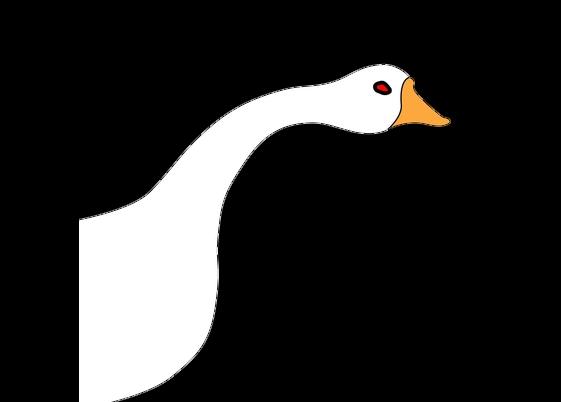
H A P P Y H O U R D I N N E R P R I V A T E R O O M S R E T A I L W I N E C A T E R I N G 5 1 4 V I A D E L A V A L L E S T E . 1 0 0 S O L A N A B E A C H , C A 9 2 0 7 5 P G R I L L E . C O M 8 5 8 . 7 9 2 . 9 0 9 0 I N F O @ P G R I L L E . C O M PROUD PARTNER OF THE CONRAD & LONG TIME SUPPORTER OF LA JOLLA MUSIC SOCIETY mousse Grille


FLOWERCHILDSANDIEGO.COM

 Brian L. - Tripadvisor
Brian L. - Tripadvisor

COME AND DINE

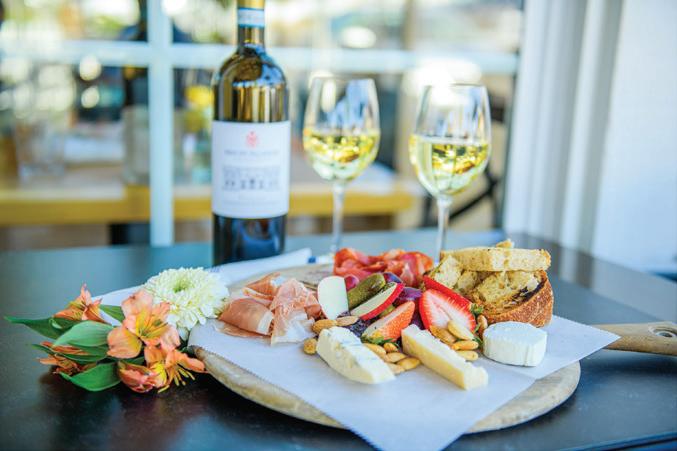

“Candor is La Jolla Hidden Gem!”
WITH US! Steps away from The Conrad, Chef Giuseppe Ciuffa's restaurant Candor is a European inspired restaurant with fresh Seasonal California Cuisine. Focused on honest and straightforward cooking, Candor sources as much as possible from local farmers and fisher men. Join Candor for an afternoon aperitif pre-concert at the wine bar or dinner following a night out. WWW.DINECANDOR.COM 1030 Torrey Pines Road, La Jolla, CA 92037 | 858.246.7818 Reservations are recommended. LUNCH | DINNER | COCKTAILS | OUTDOOR DINING
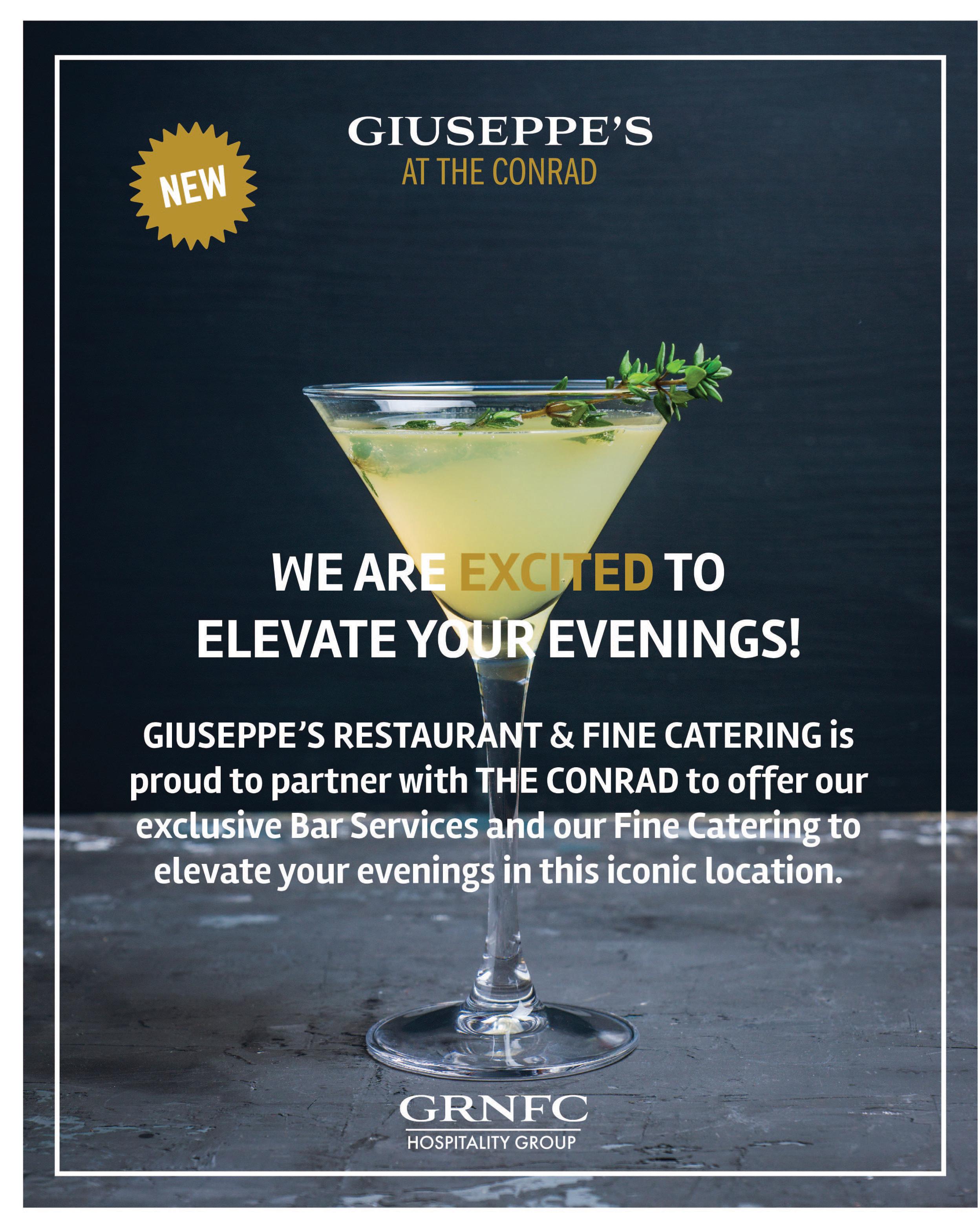
JANUARY
DAVINA & THE VAGABONDS
SATURDAY, JANUARY 14, 2023 6:30 PM & 8:30 PM
The JAI
CONNECT TO THE CONRAD JOYCE DIDONATO
EDEN
WEDNESDAY, JANUARY 25, 2023 · 7:30 PM
ProtoStar Innovative Series
The Baker-Baum Concert Hall
LEIF OVE ANDSNES
THURSDAY, JANUARY 19, 2023 · 7:30 PM
Piano Series
The Baker-Baum Concert Hall
MONTEREY JAZZ FESTIVAL ON TOUR
DEE DEE BRIDGEWATER, KURT ELLING, CHRISTIAN SANDS, LAKECIA BENJAMIN, CLARENCE PENN, YASUSHI NAKAMURA
THURSDAY, JANUARY 26, 2023 · 7:30 PM Jazz Series
Balboa Theatre
123 ANDRÉS
SATURDAY, JANUARY 28 · 10 AM & 11:30 AM
ConRAD Kids Series
The JAI
JOHAN DALENE
SUNDAY, JANUARY 29, 2023 · 3 PM Discovery Series
The Baker-Baum Concert Hall
FEBRUARY
KODO
ONE EARTH TOUR 2023: TSUZUMI
SATURDAY, FEBRUARY 11, 2023 · 7:30 PM
Special Family Event
The Baker-Baum Concert Hall
NAT GEO LIVE!
LIFE ON THE VERTICAL WITH MARK SYNNOTT
THURSDAY, FEBRUARY 16, 2023 · 7 PM
Nat Geo Live! Speaker Series
The Baker-Baum Concert Hall
ARIS QUARTETT
SUNDAY, FEBRUARY 19, 2023 · 3 PM
Discovery Series
The Baker-Baum Concert Hall
QUARTETTO DI CREMONA
FRIDAY, FEBRUARY 24, 2023 · 7:30 PM
Revelle Chamber Music Series
The Baker-Baum Concert Hall
PIERRE-LAURENT AIMARD

SUNDAY, FEBRUARY 26, 2023 · 7:30 PM
Piano Series
The Baker-Baum Concert Hall
Daniil Trifonov TheConrad.org 858.459.3728
COMING UP...












 La Jolla Music Society
La Jolla Music Society


































































































 Brian L. - Tripadvisor
Brian L. - Tripadvisor










